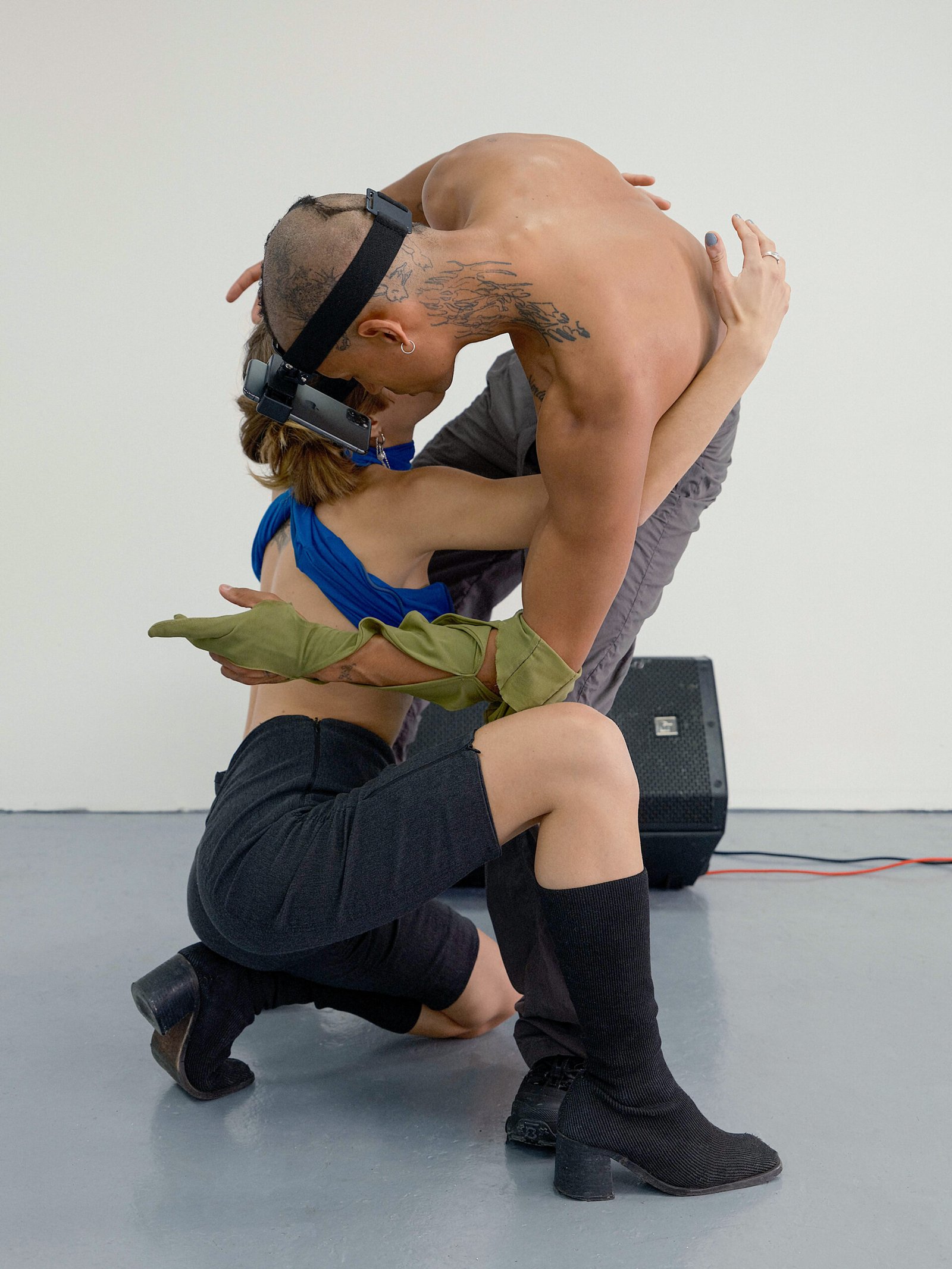
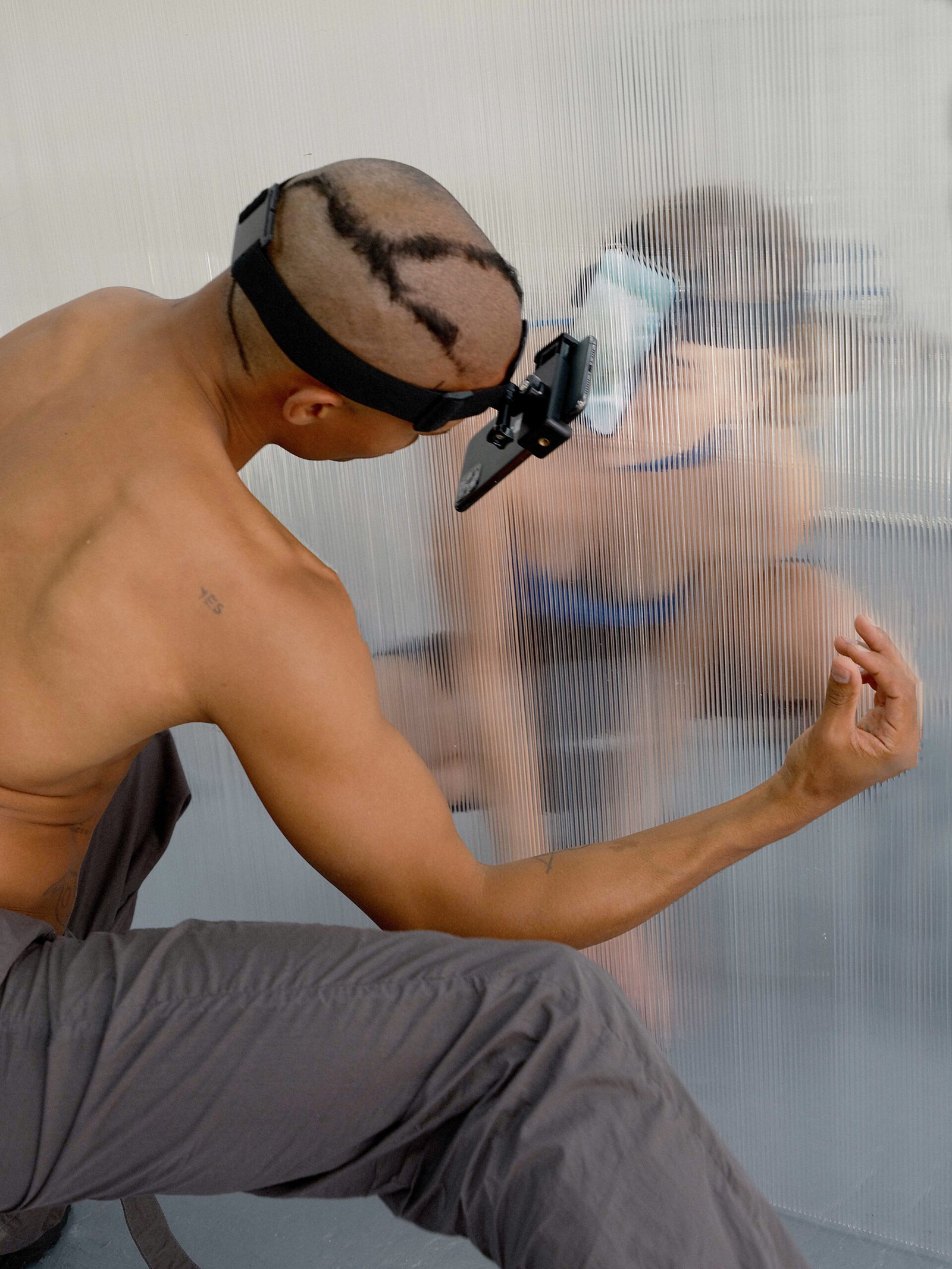
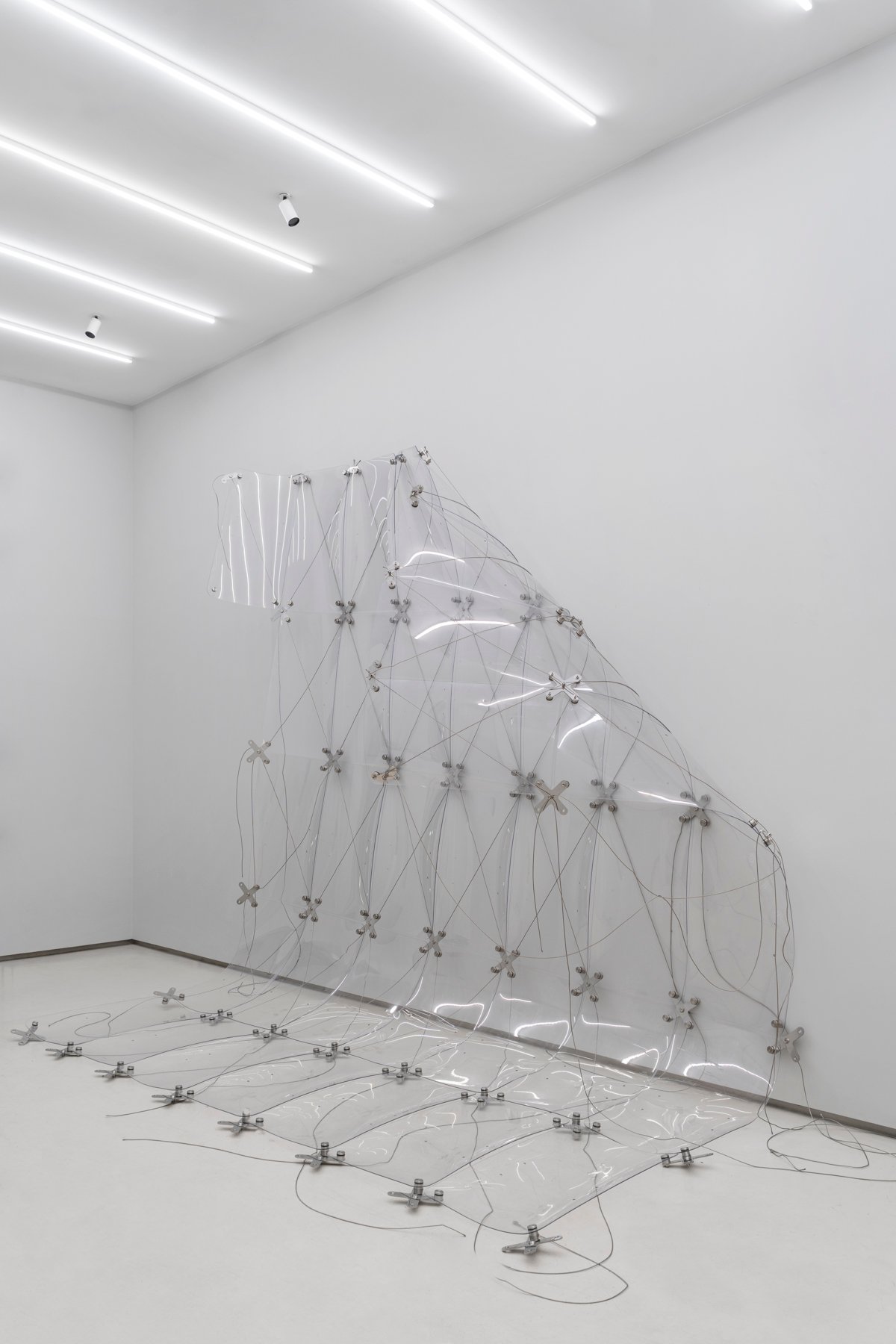
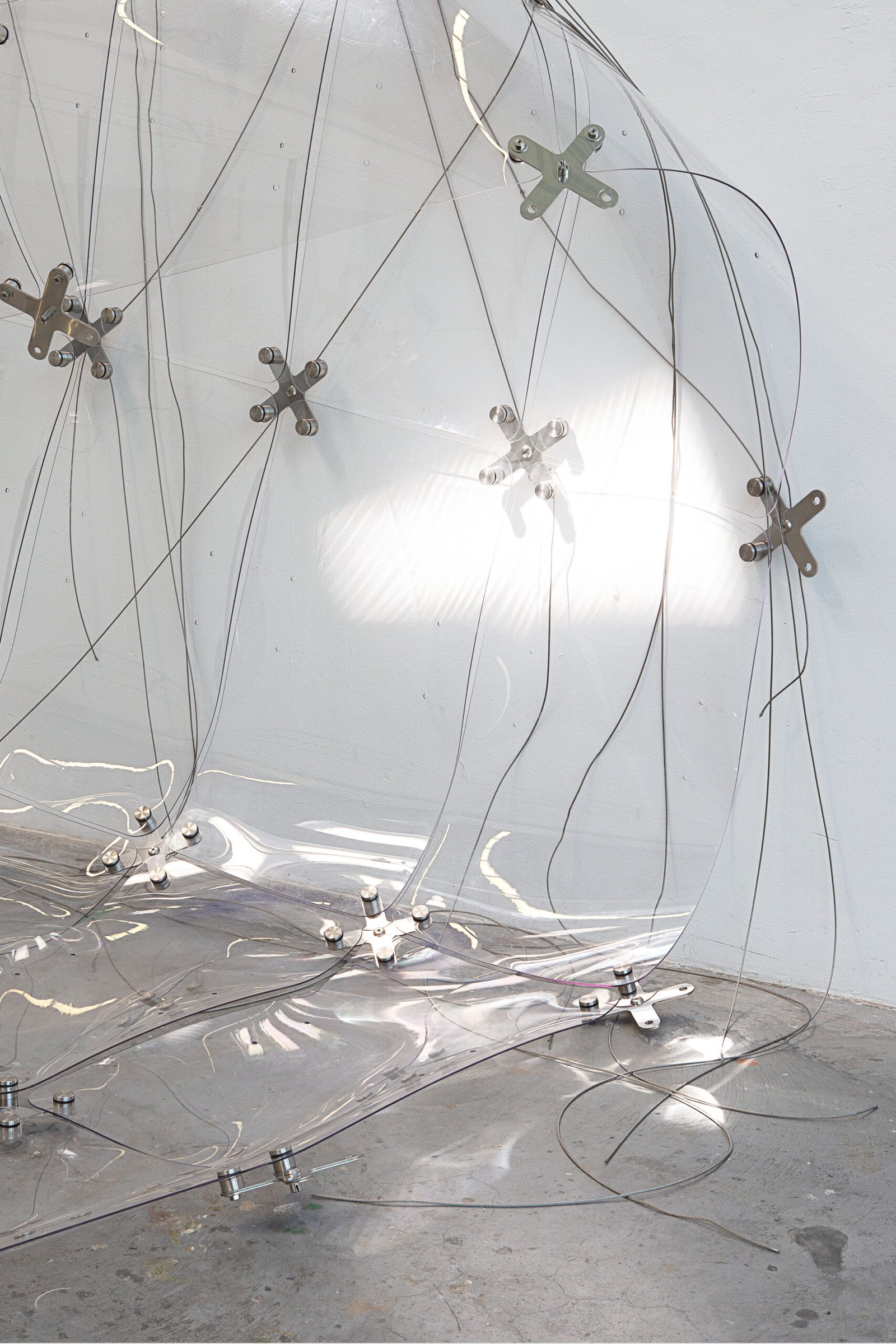
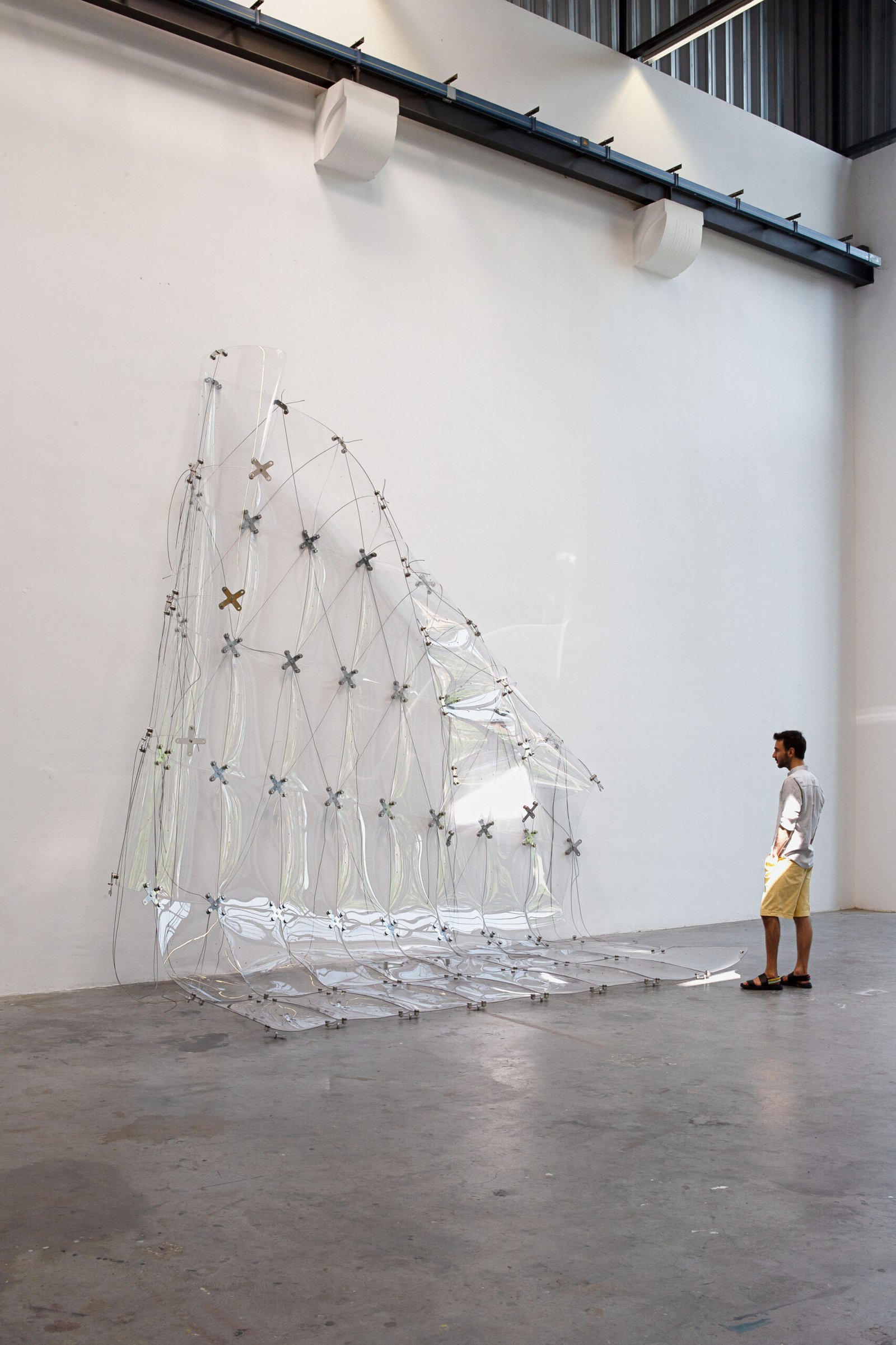
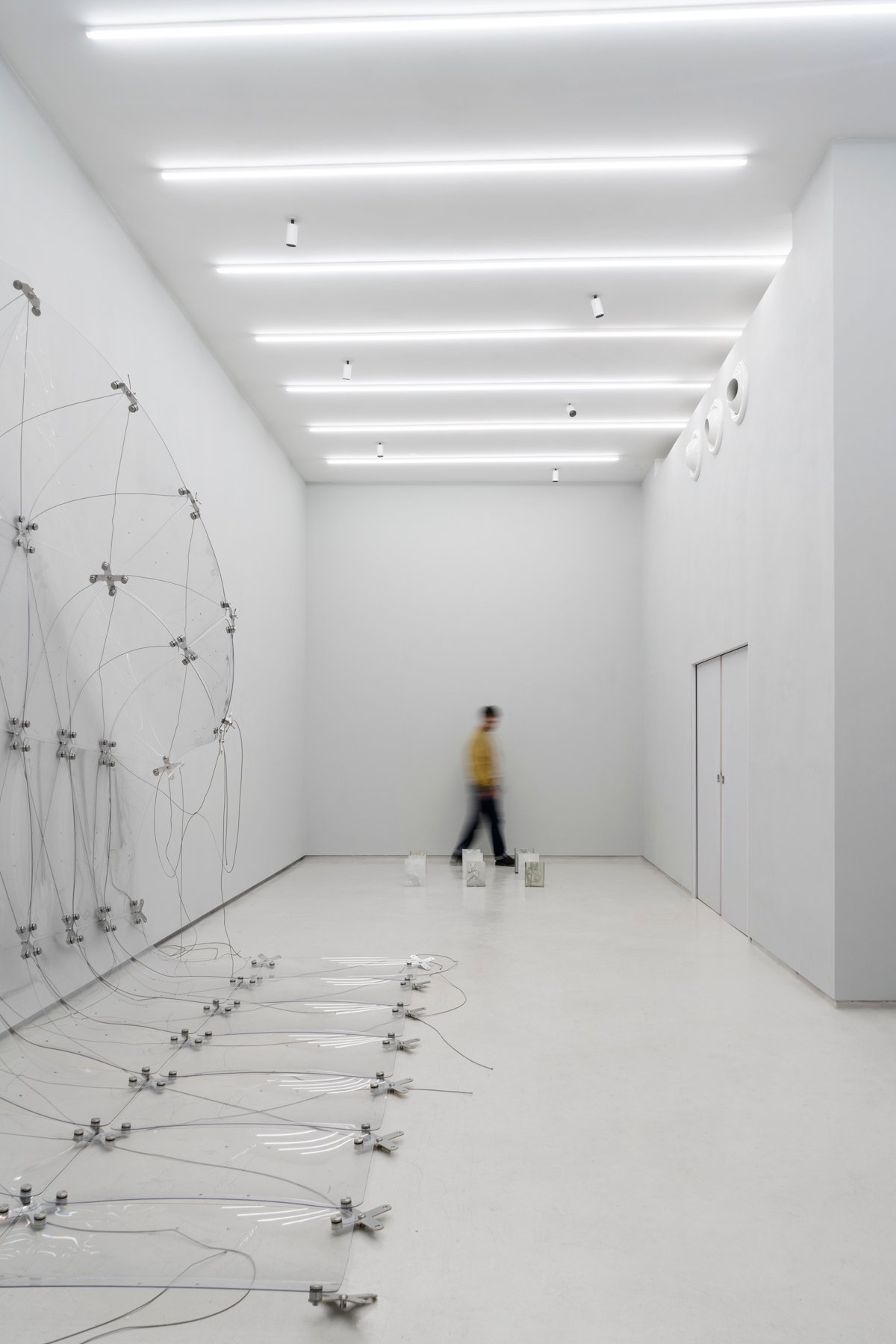
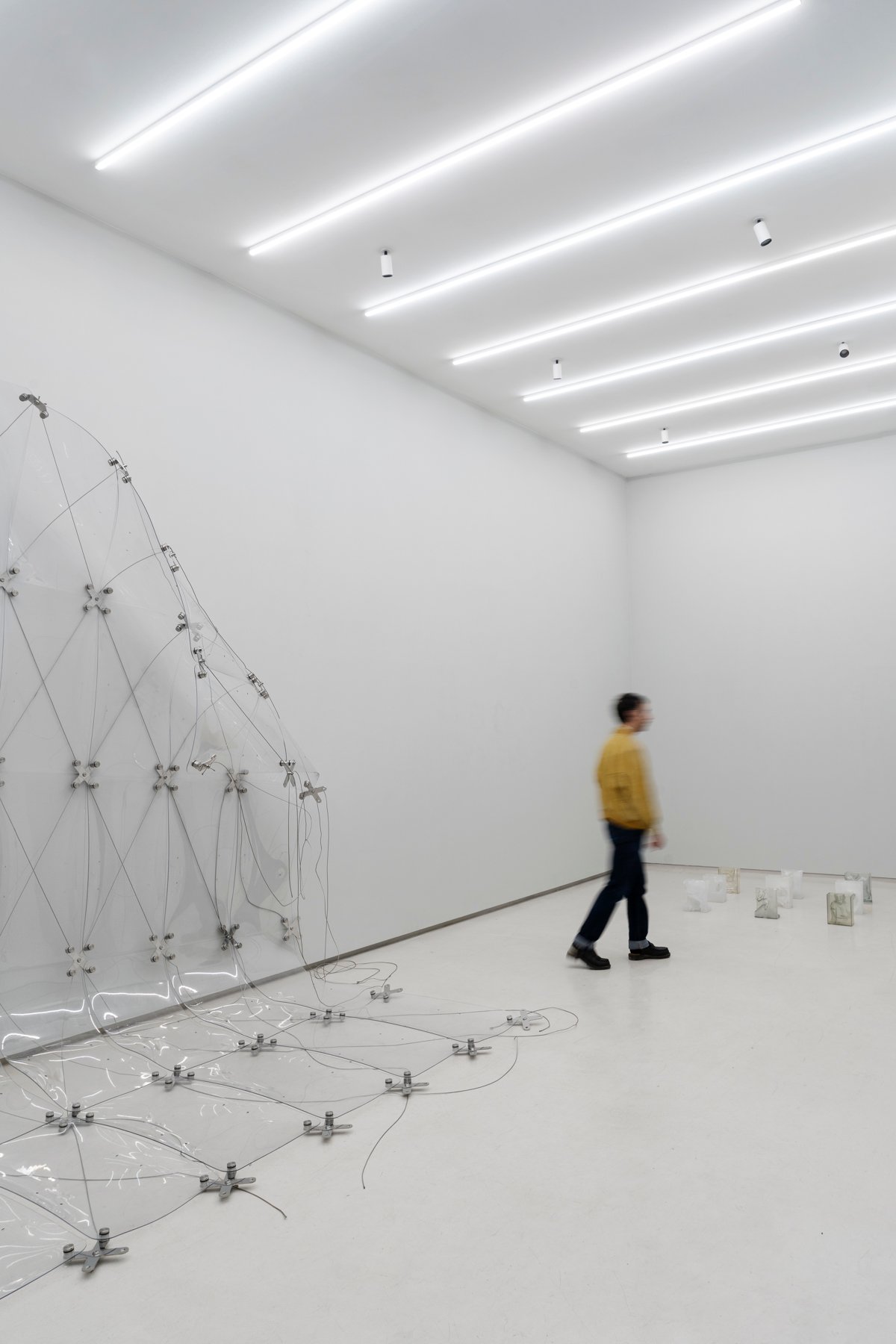
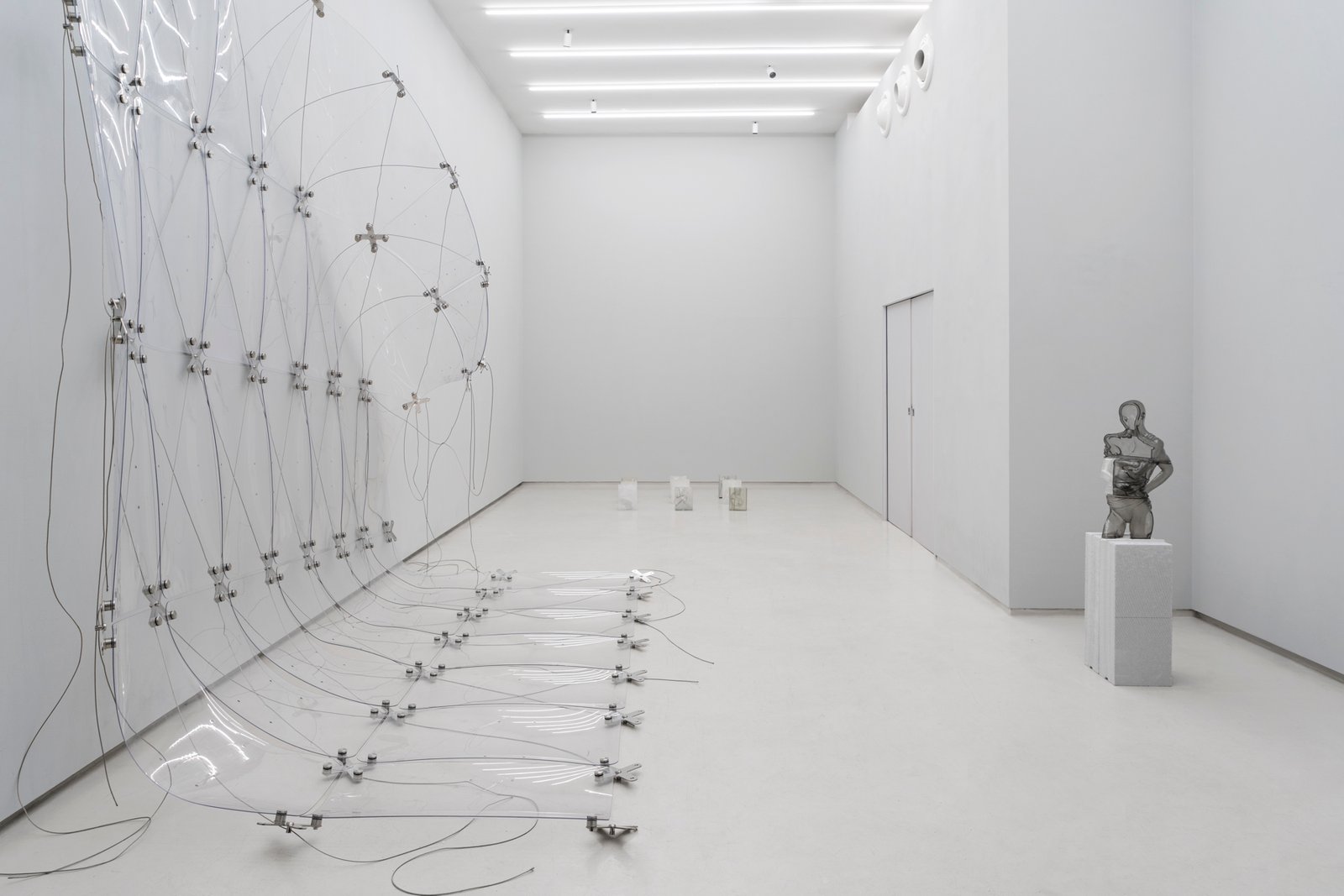
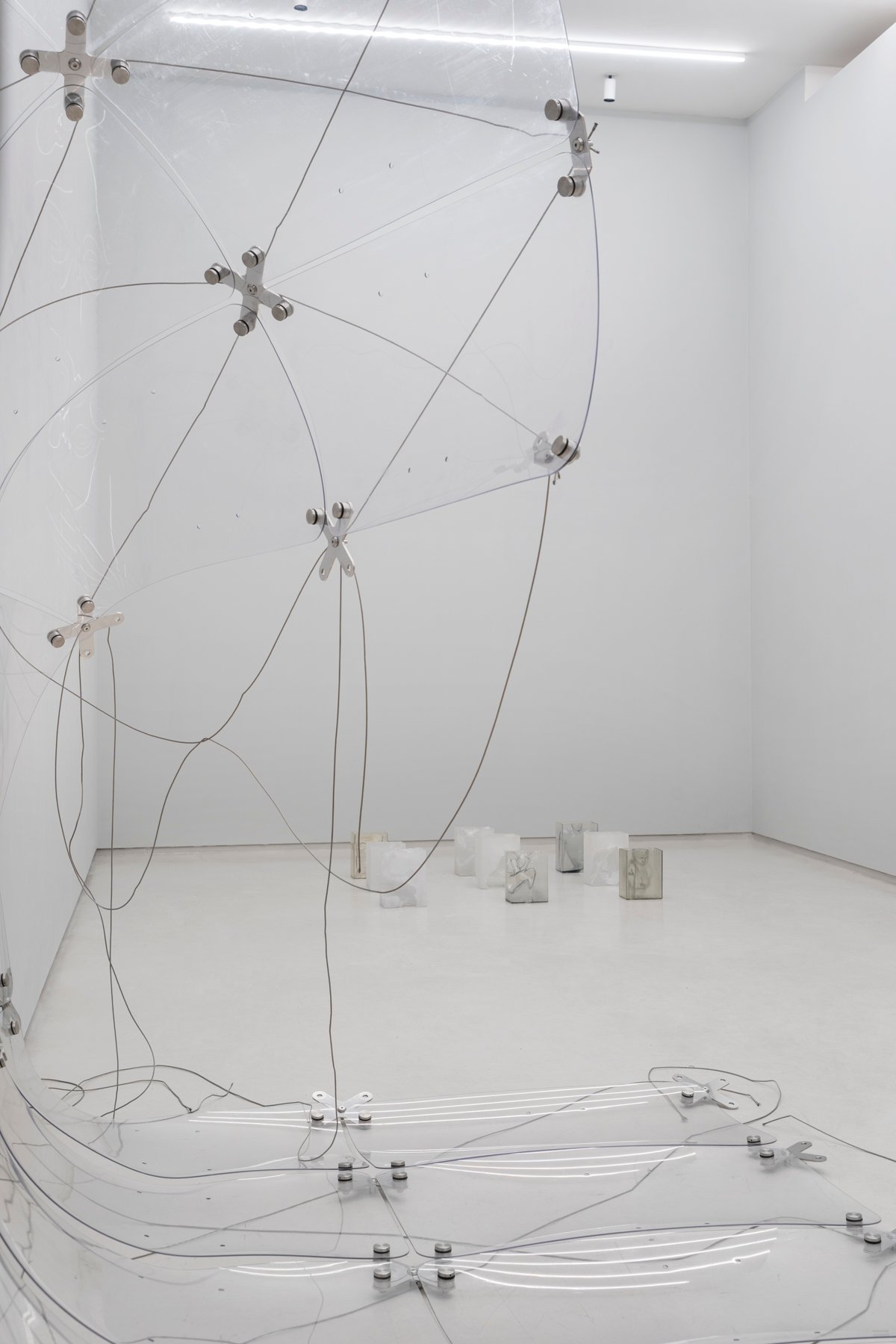
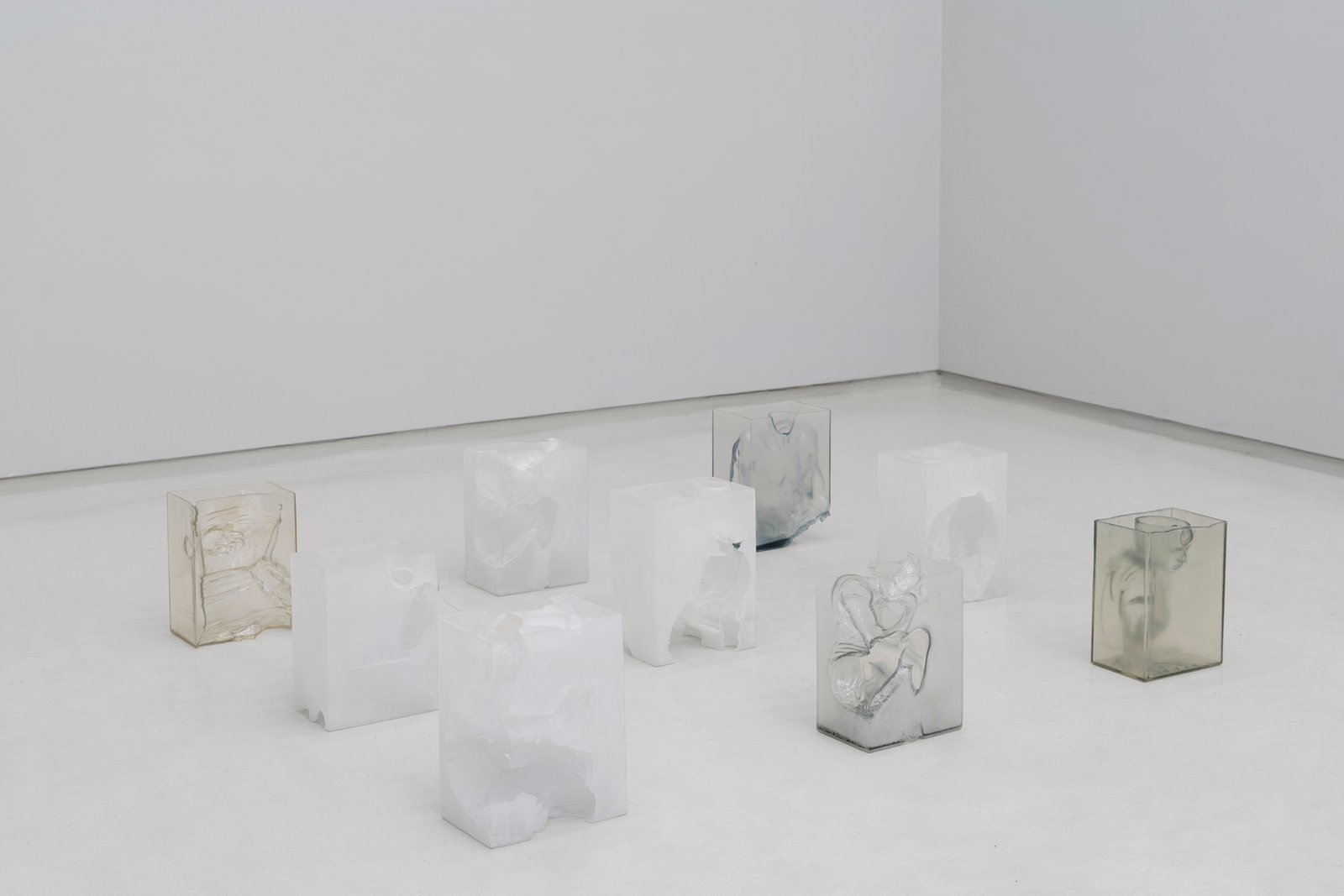
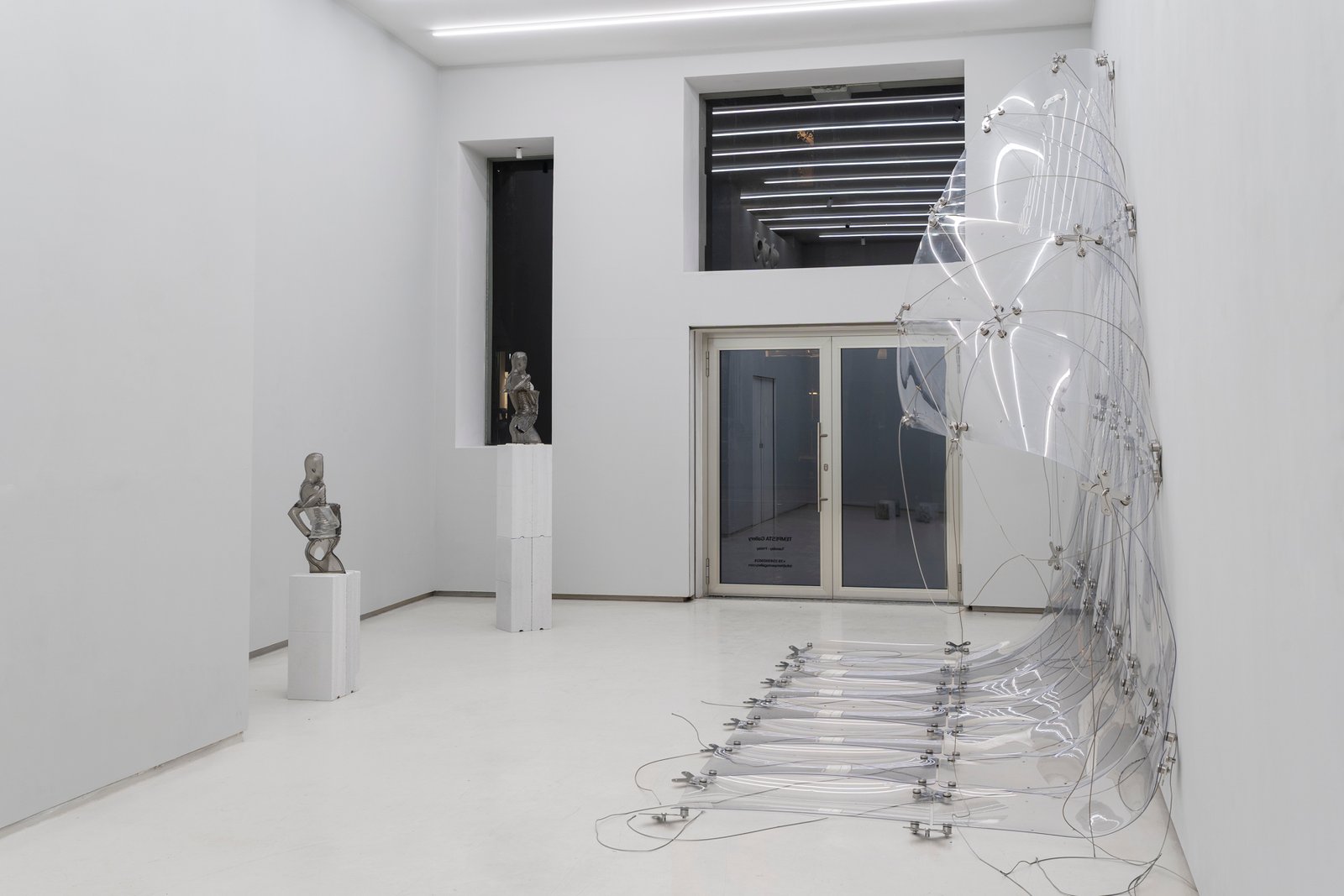
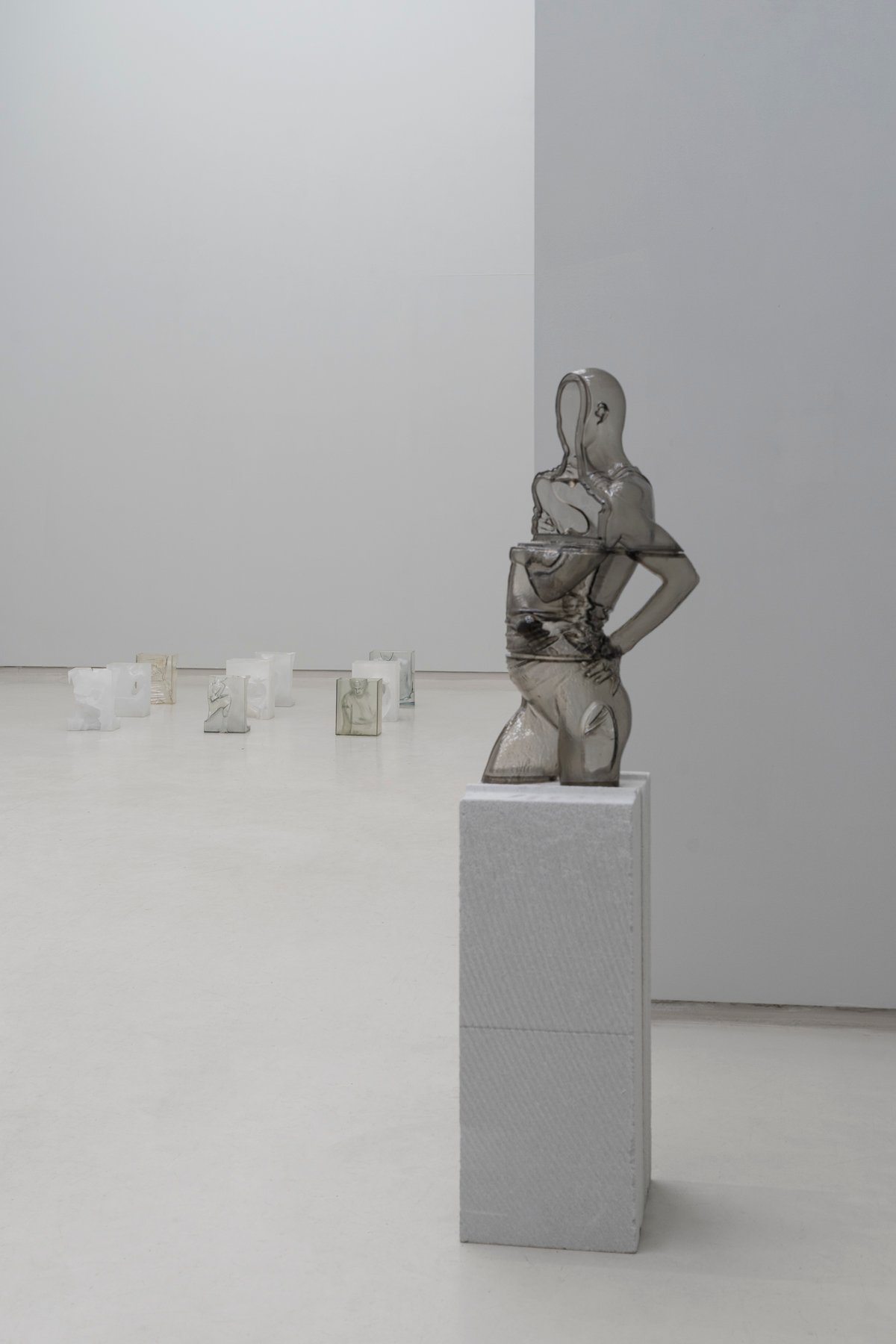
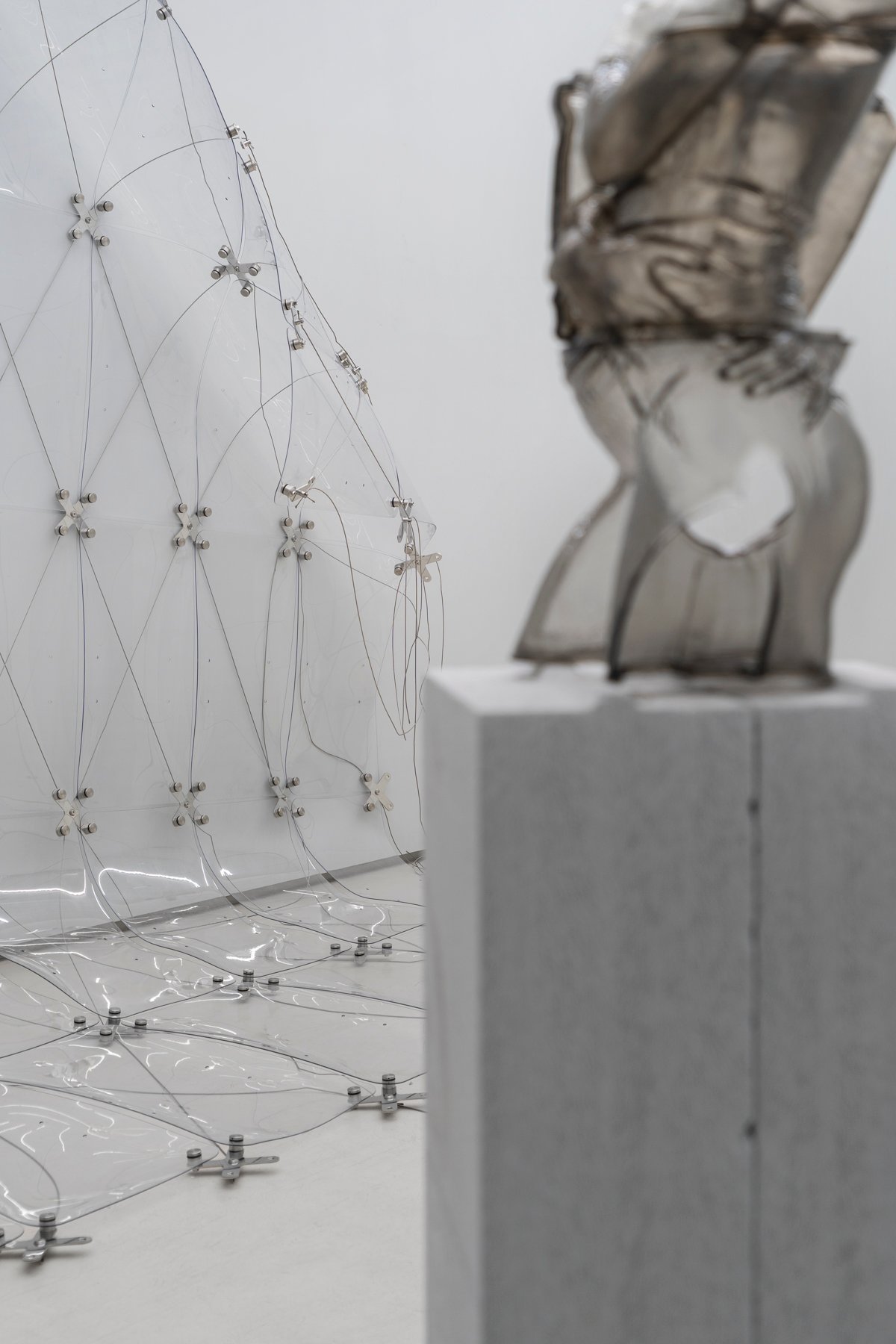
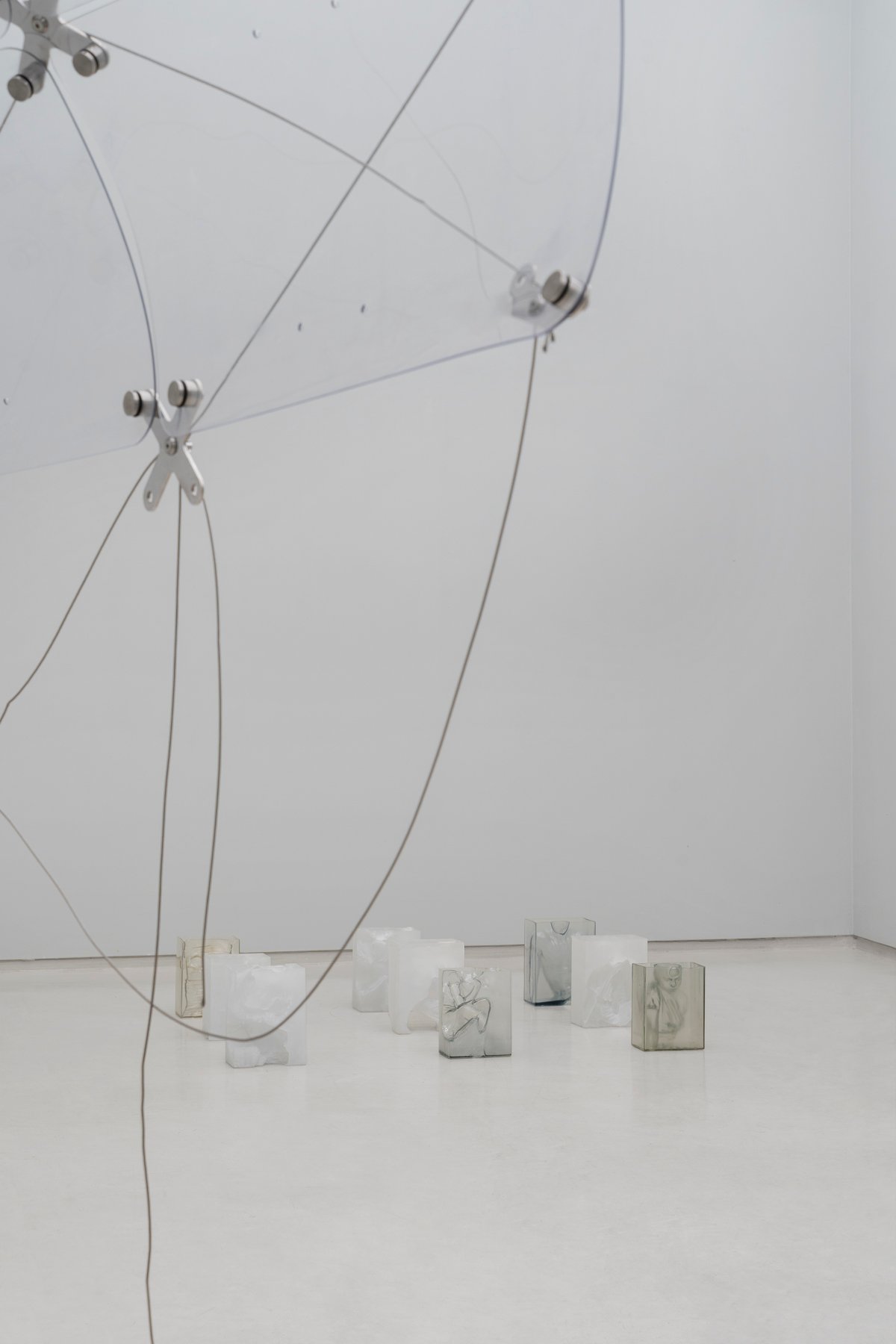
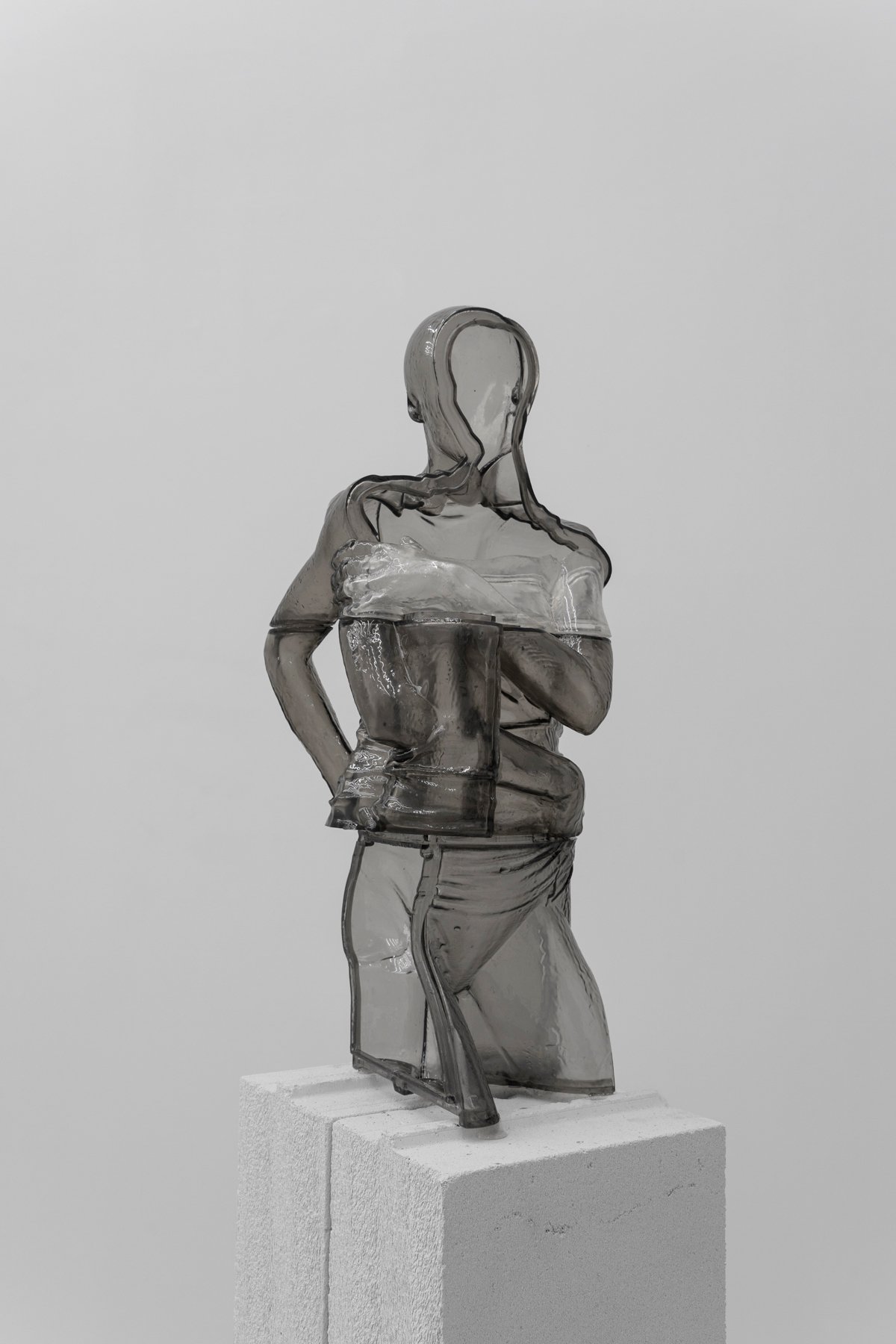
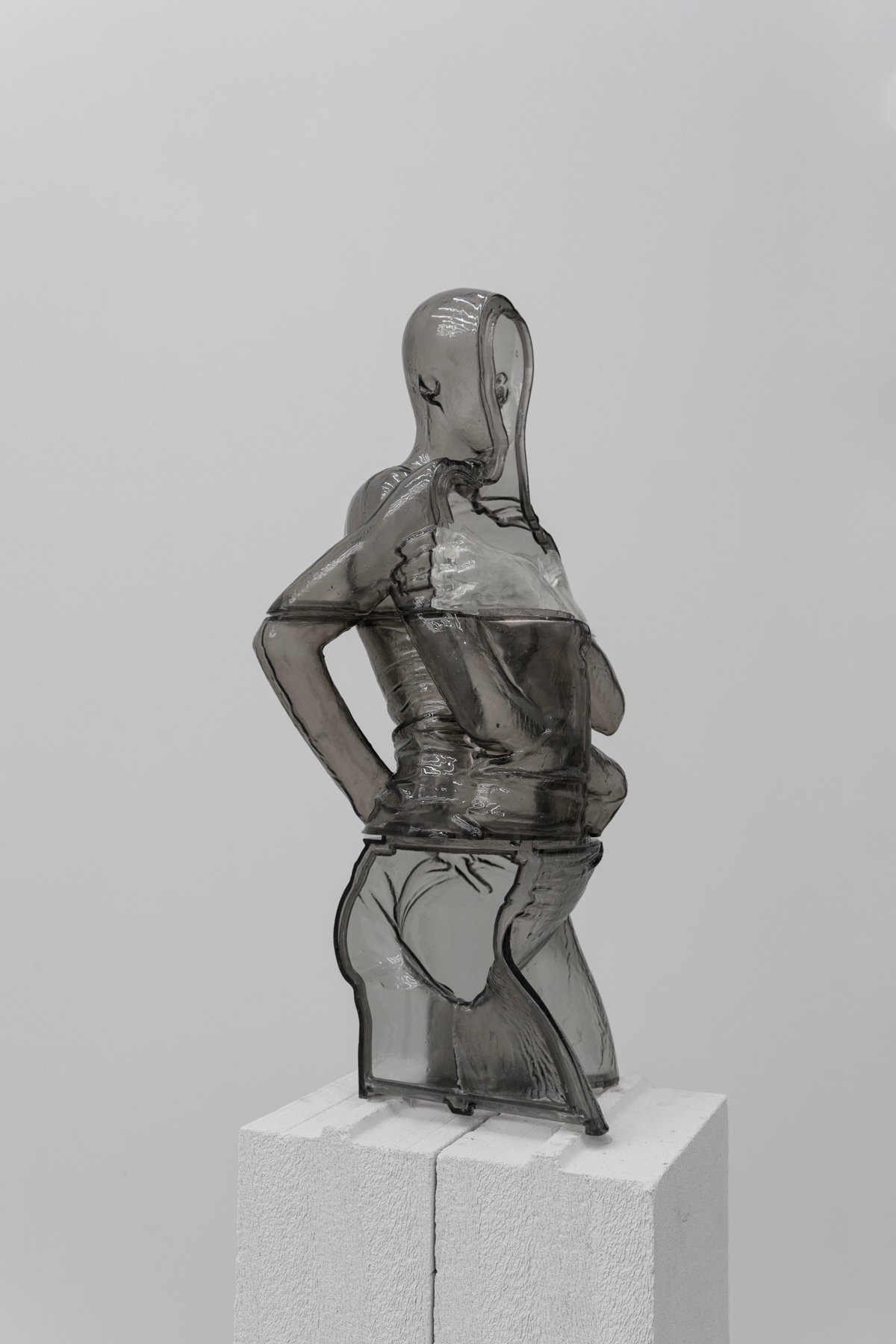
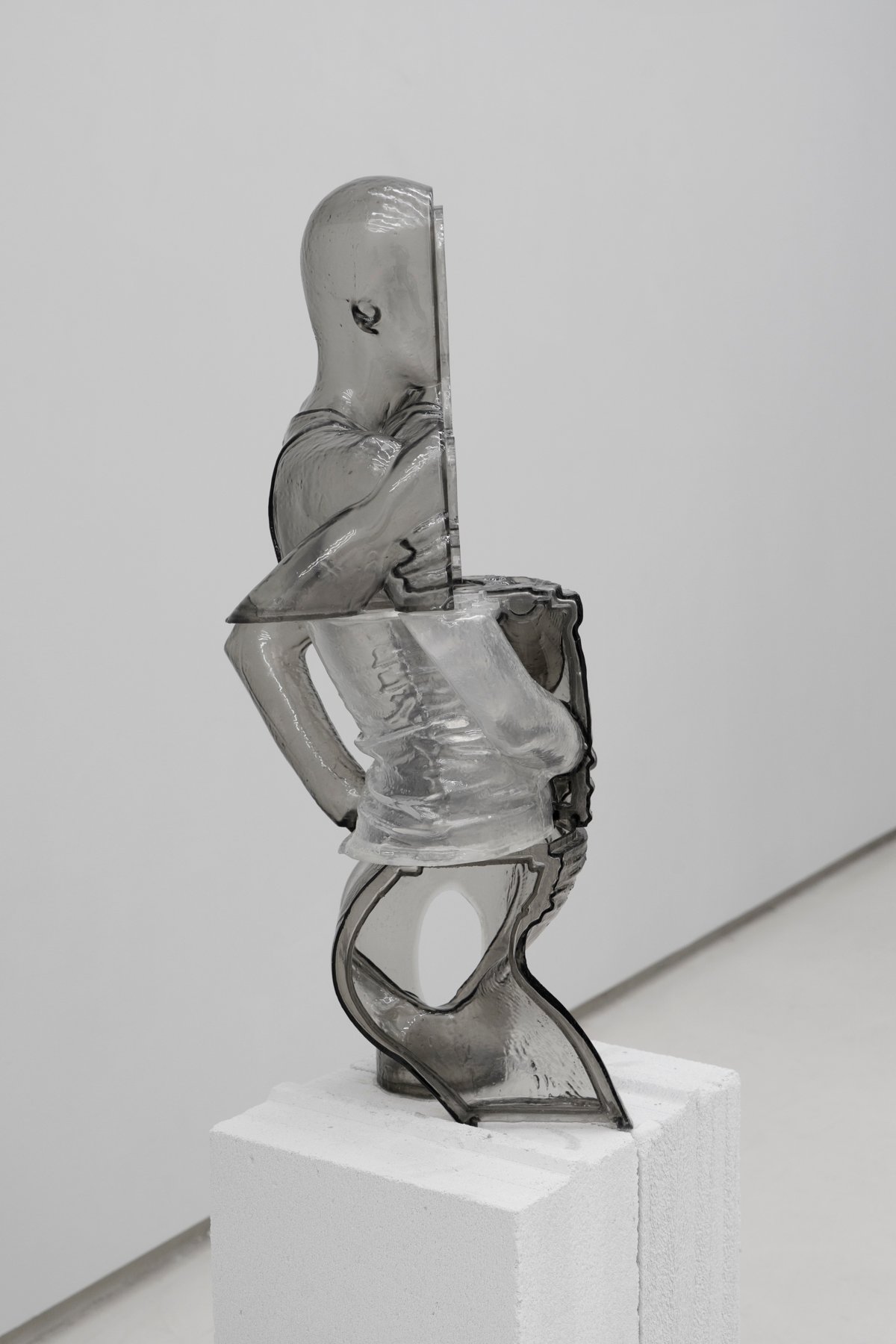
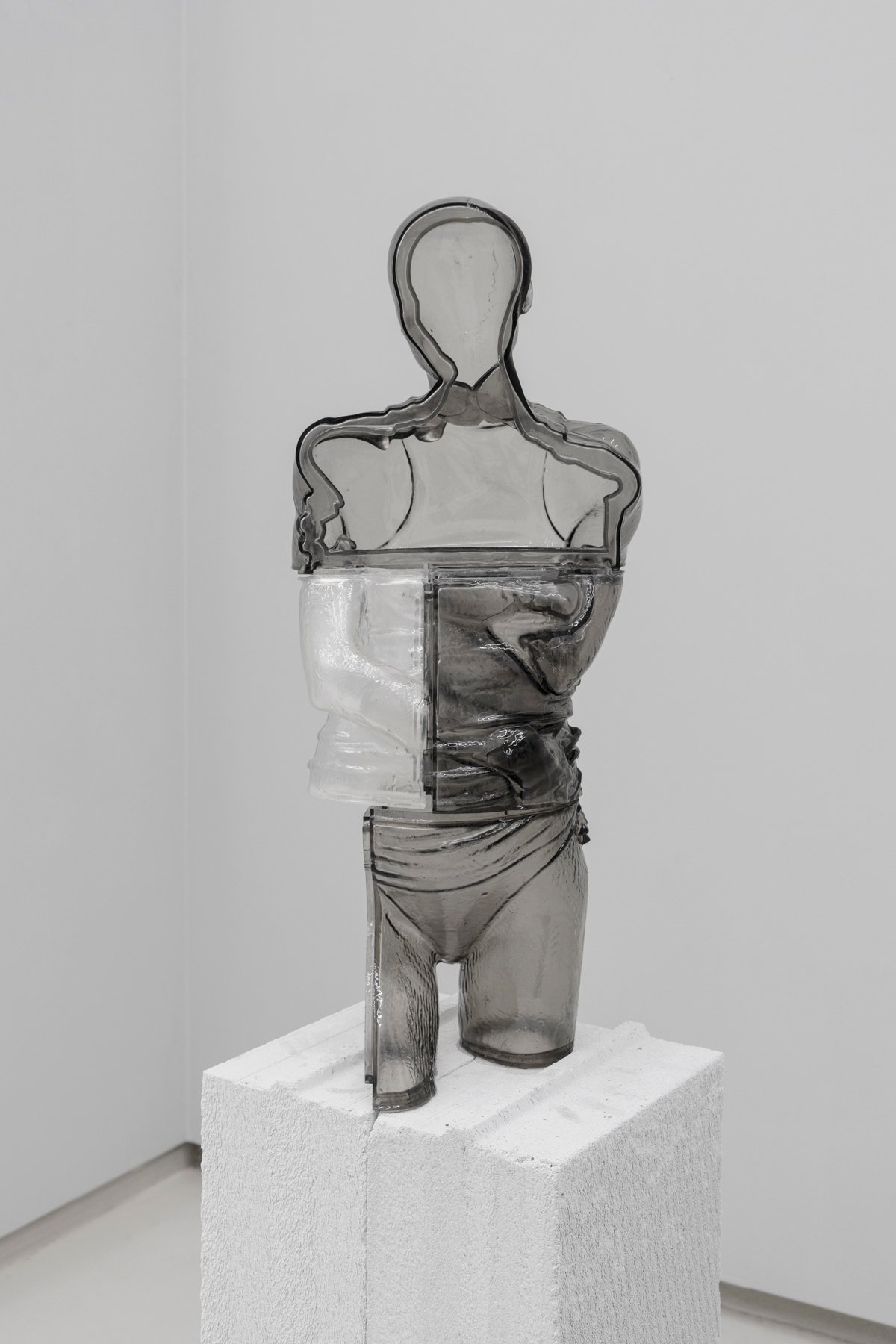
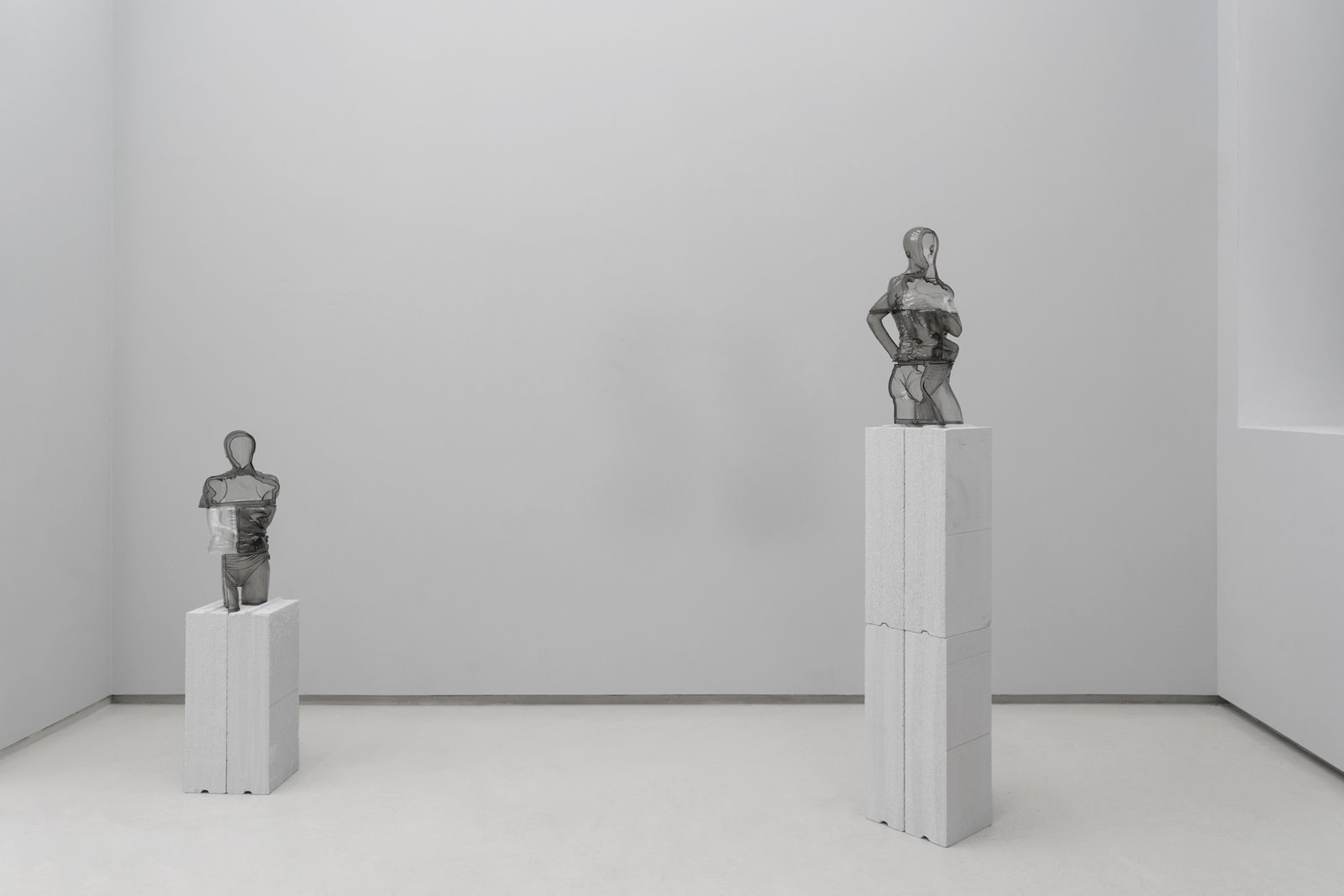
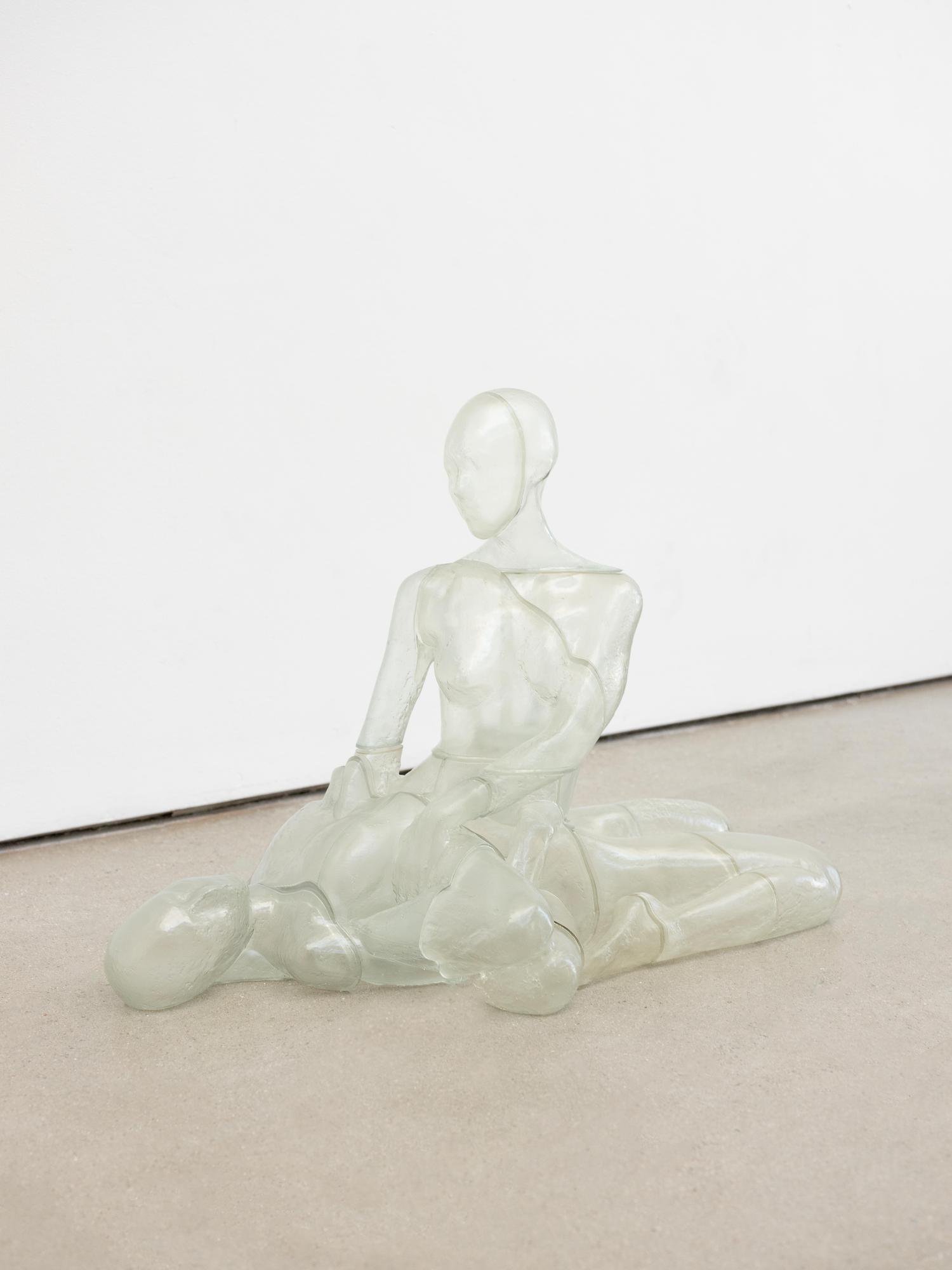
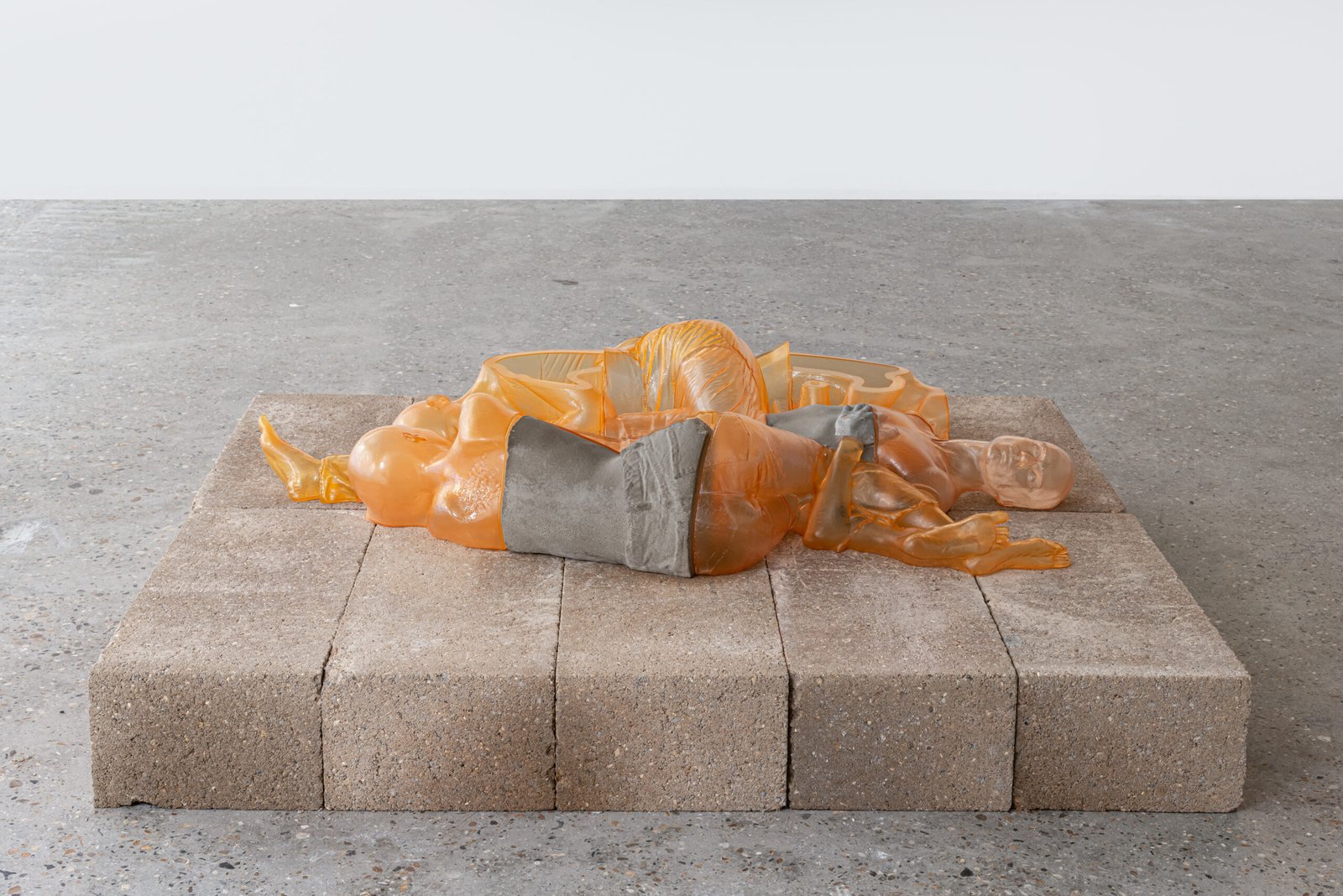
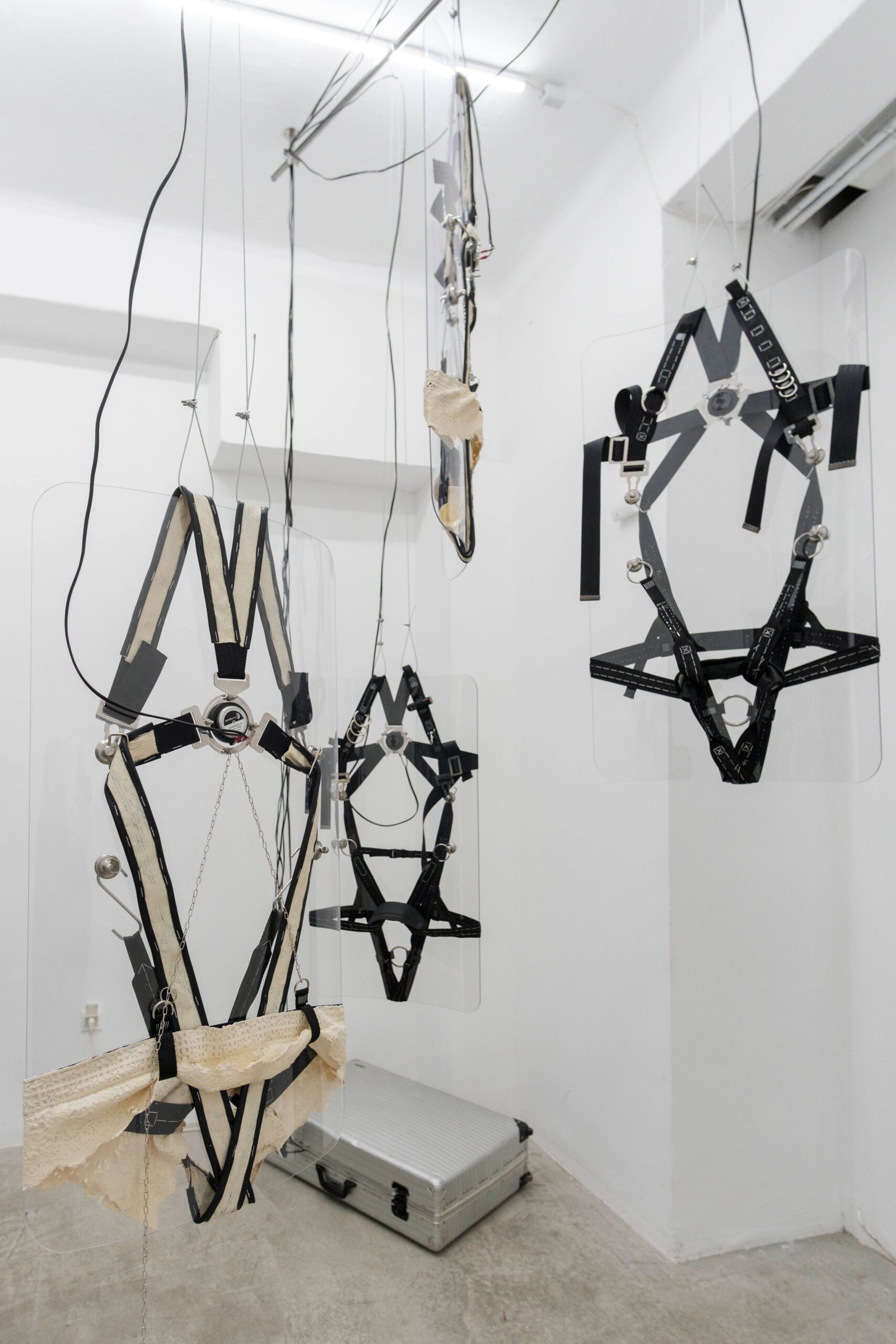
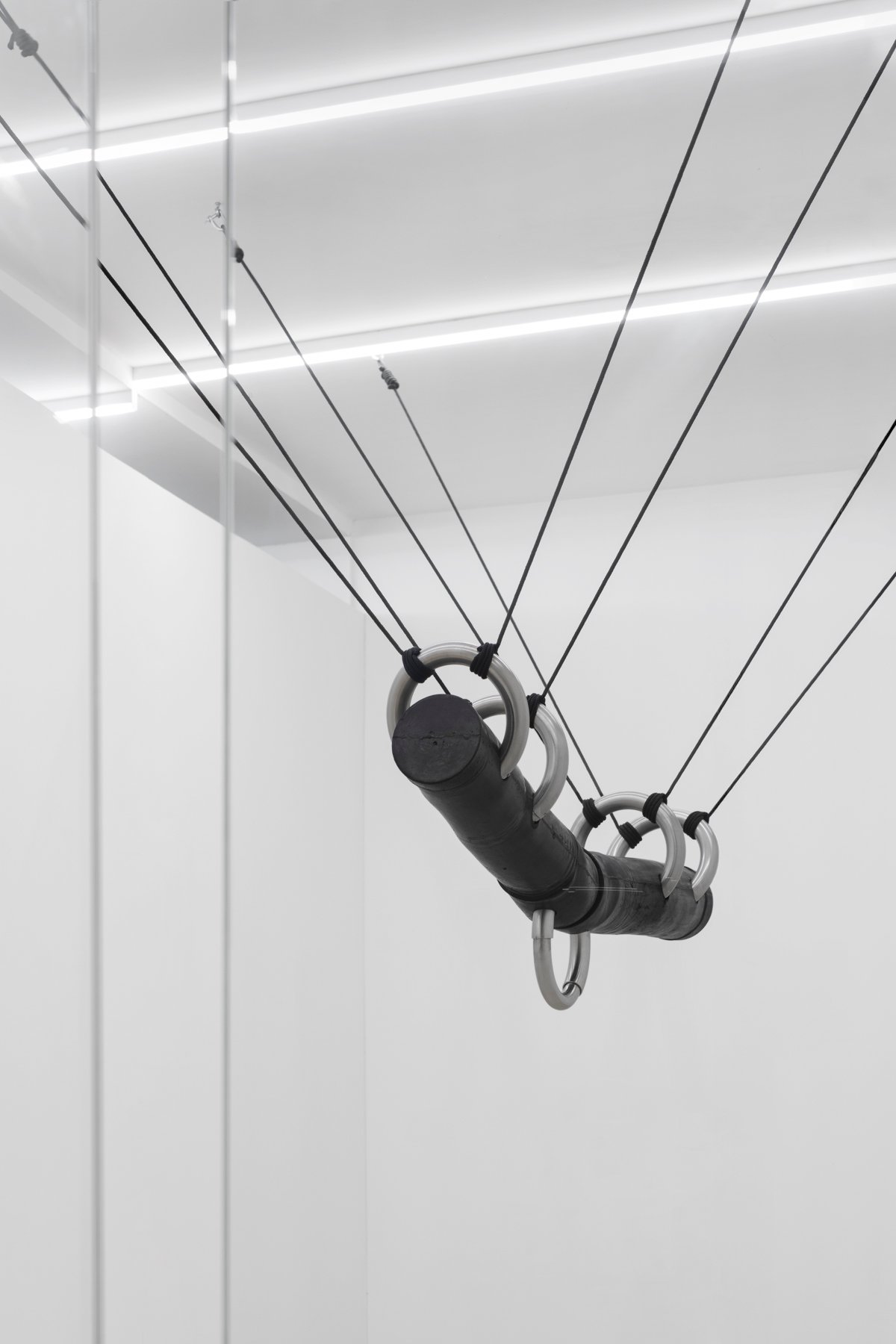
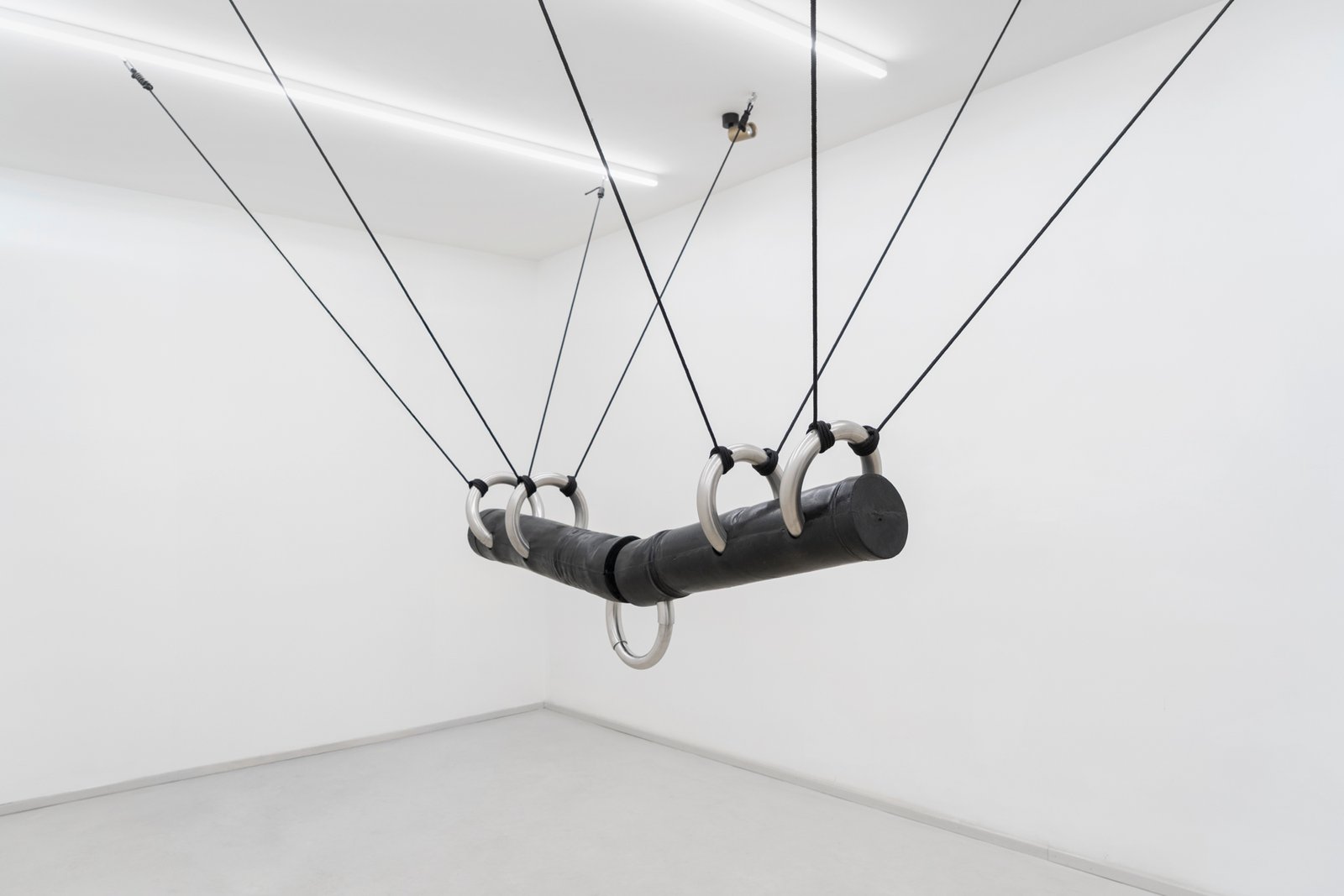
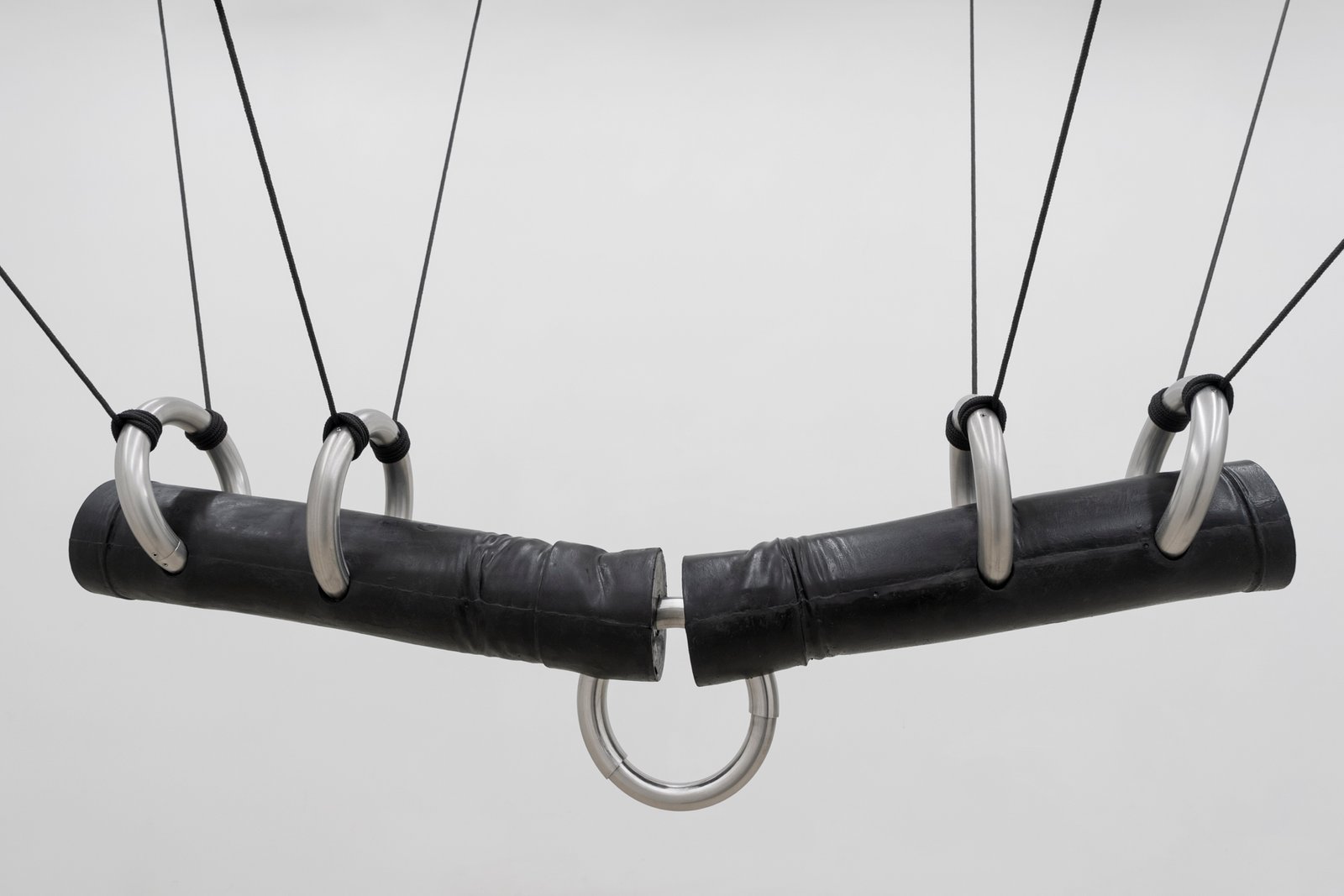
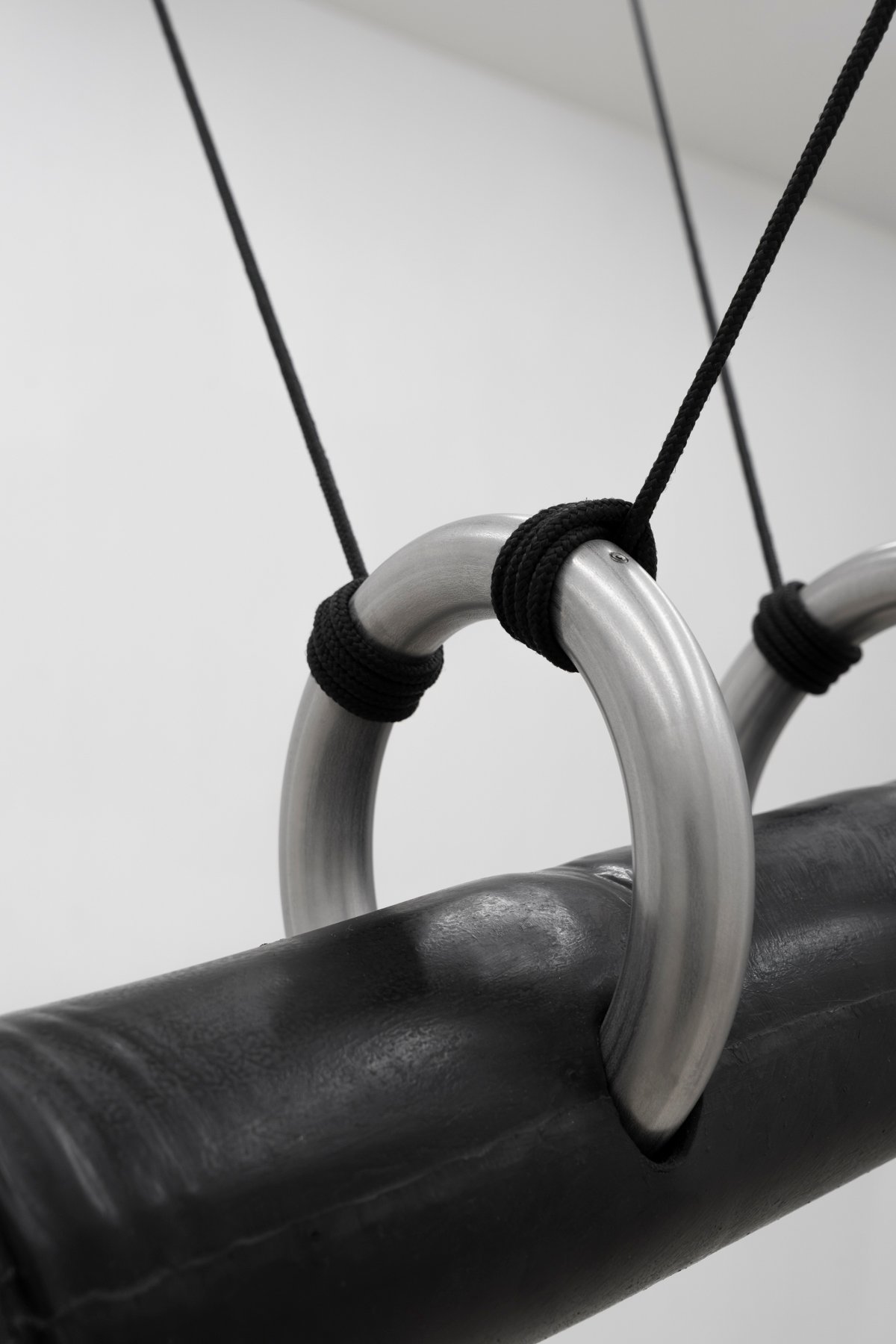
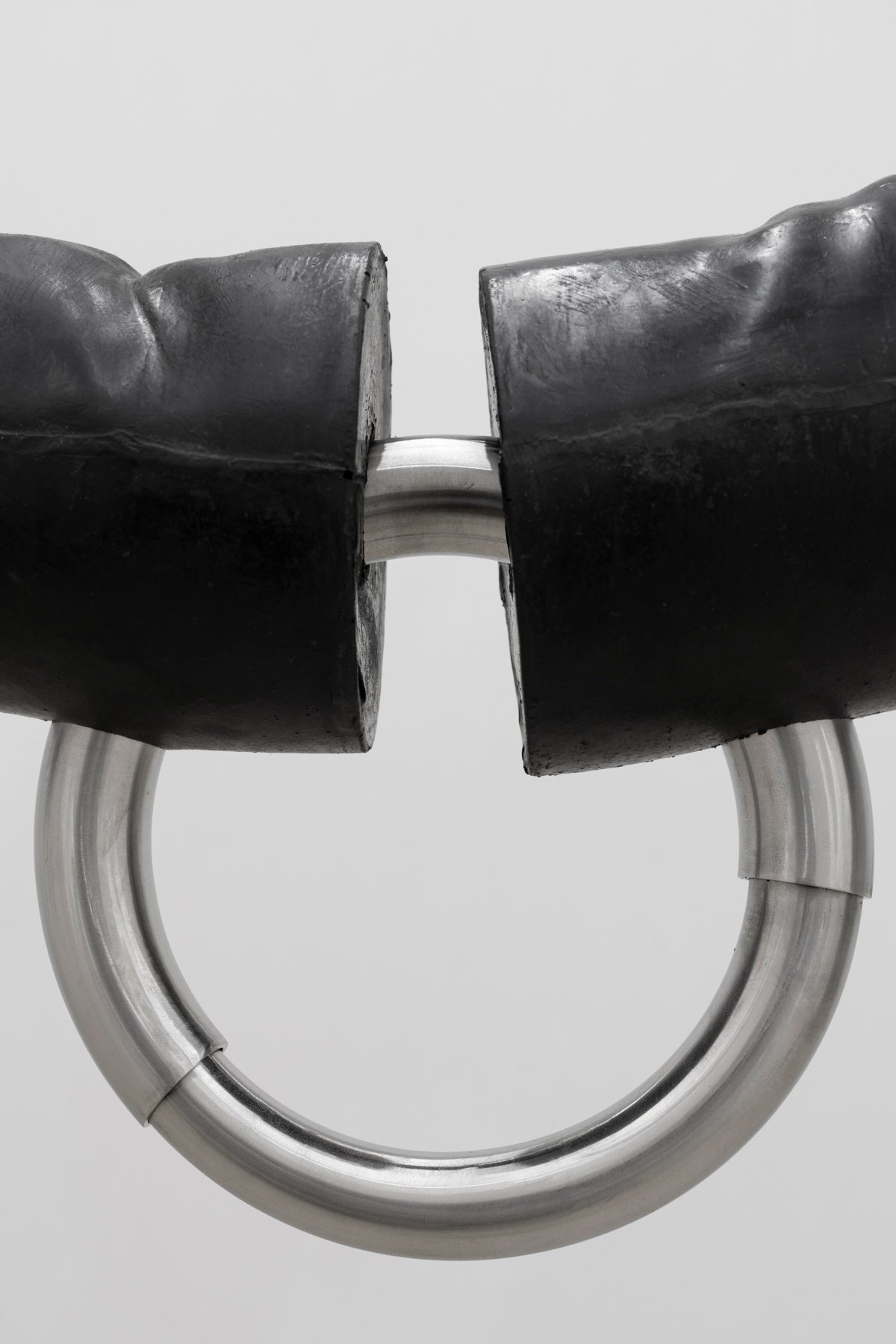
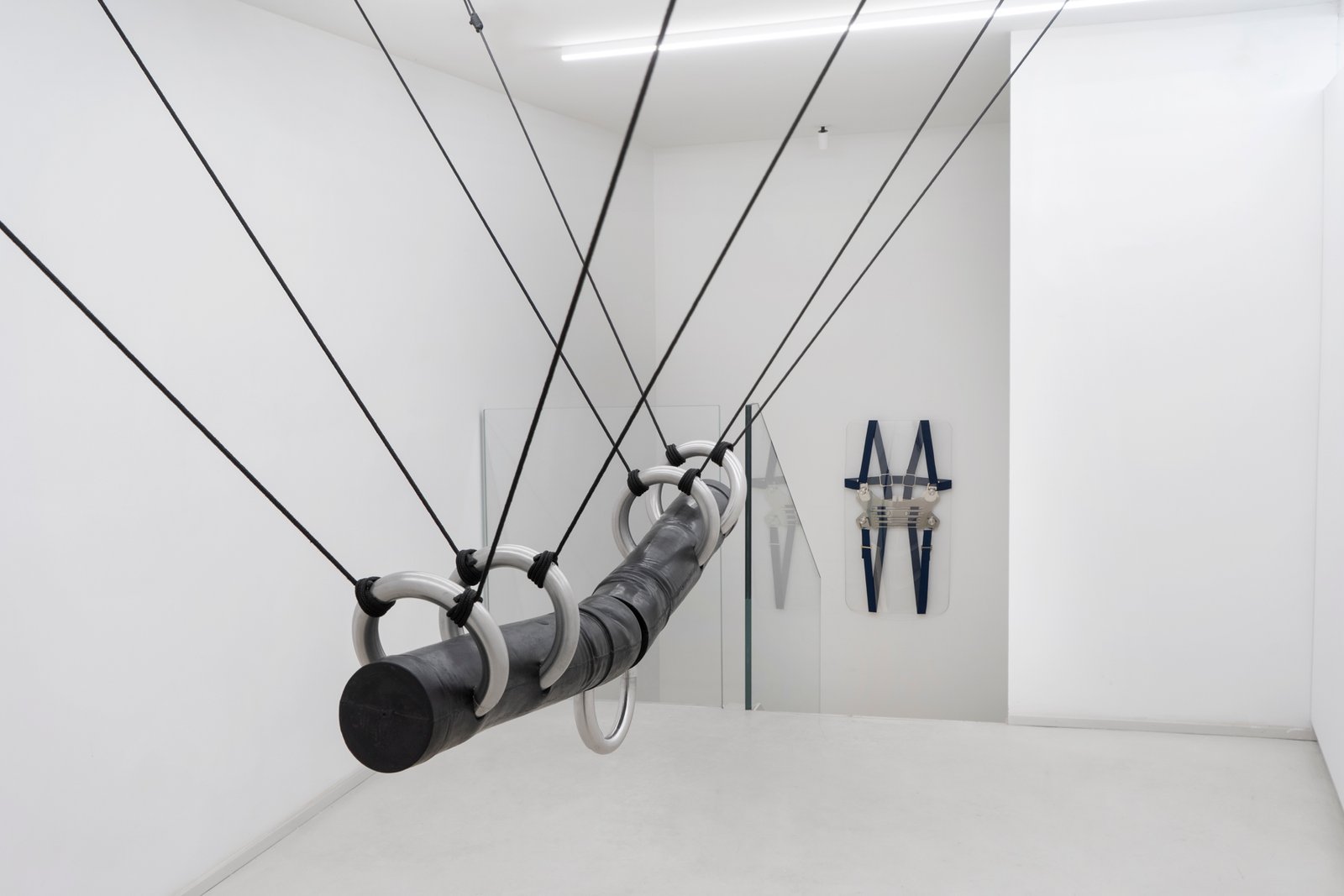
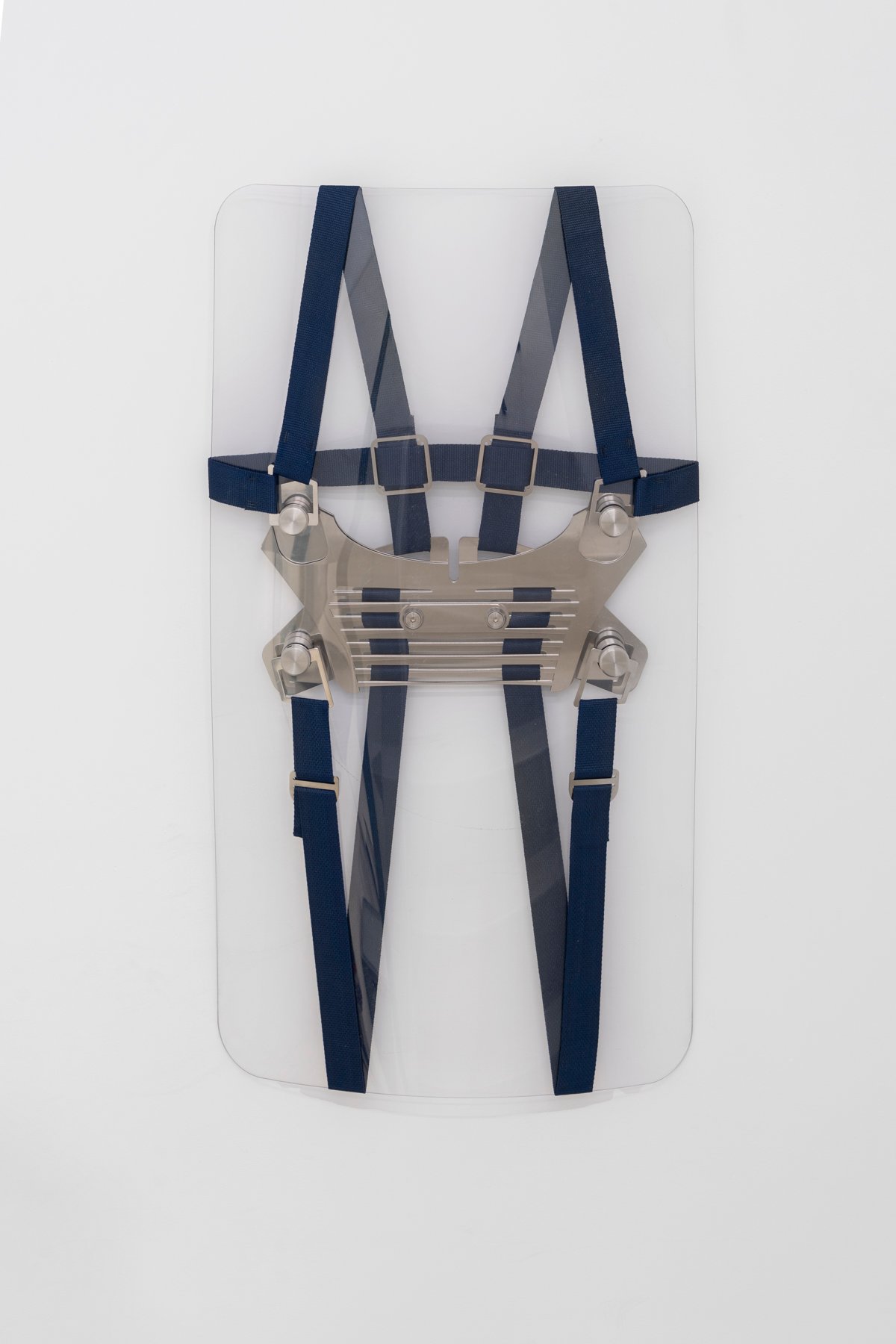
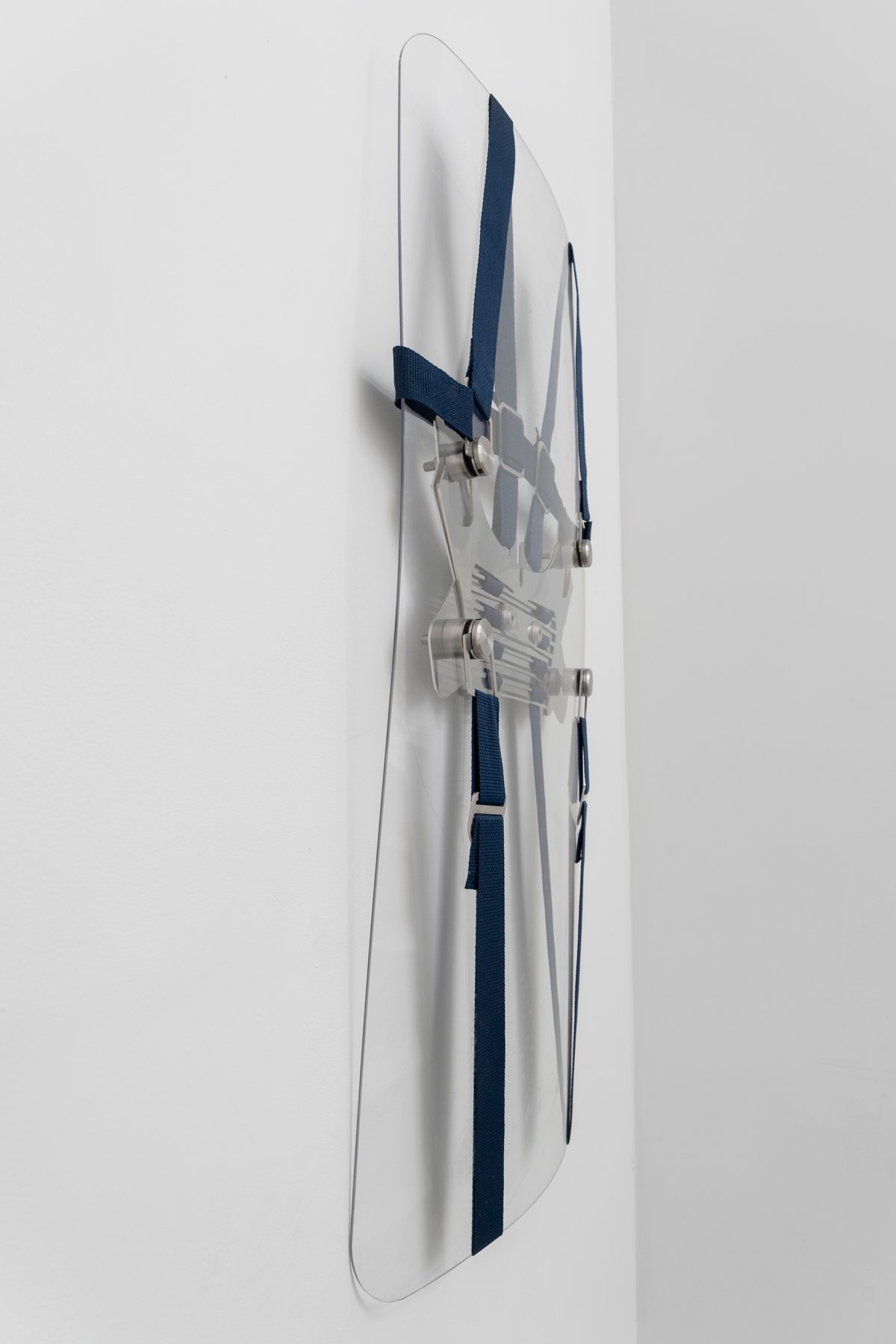
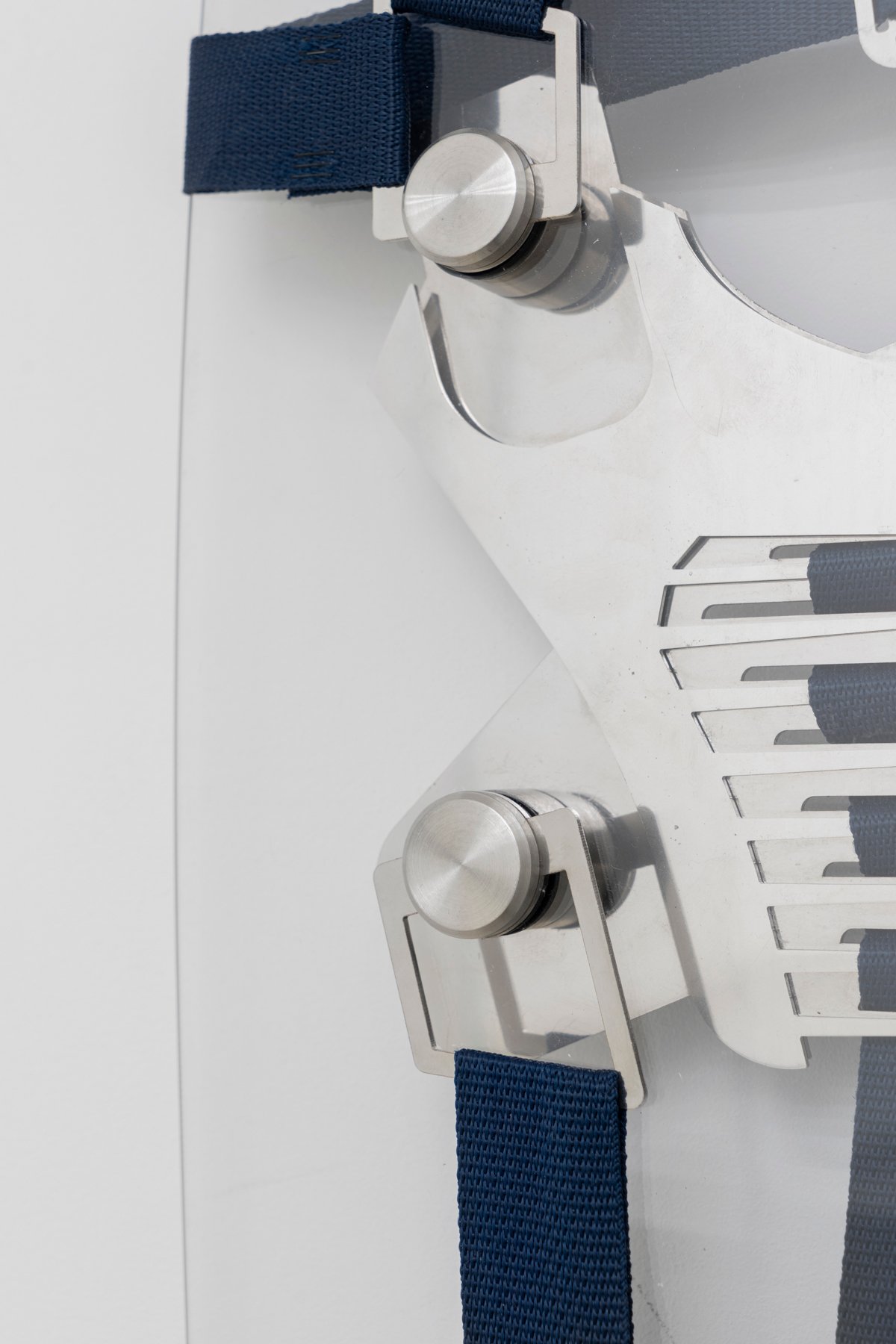
In an era where power manifests not only through laws or institutions but infiltrates material infrastructures and the invisible protocols of the digital, the work of Viktor Petrov and Anna-Lena Krause functions as a dual device of deconstruction. On one side, it exposes the mechanisms through which space and hierarchies are produced; on the other, it reconfigures them as sites of resistance, questioning our capacity to perceive, remember, and relate.
Michel Foucault once wrote that “space is fundamental in any form of the exercise of power” and that no architecture is innocent. Viktor Petrov’s research operates precisely along these lines: starting from materials embedded in the visual and functional vocabulary of control—riot shields, modernist façade elements, technological surfaces linked to production—he transforms their purpose to reveal their ideological matrix. The transparent glass of modernism, often a symbol of openness and progress, becomes in his work a barrier, a tool of surveillance, an interface between the individual and the power that observes them. In his practice, “building” is always a political act, and every object is a micro-architecture carrying an idea of order, discipline, and the distribution of bodies in space.
If Petrov addresses power as a force that structures space, Anna-Lena Krause approaches it as an energy that shapes perceptions and interpersonal bonds. Her practice—interweaving sculpture, performance, and digital tools such as 3D scanning and artificial intelligence—investigates what it means to be present, remembered, or forgotten in an era of increasingly dematerialised connections. As Donna Haraway reminds us, “nobody lives everywhere; everybody lives somewhere”, and our experience is always intrinsically relational. Krause stages this interdependence, revealing how power operates in the realms of affection and memory, in the processes through which we internalise the world and construct ourselves.
The point of convergence between the two artists lies in their shared interest in construction as a form of power: Petrov focuses on physical structures that define access, visibility, and movement; Krause on the immaterial structures that shape how we perceive and interact. Both reveal that the distinction between these dimensions is increasingly porous. As Judith Butler observes, “there is no body that is not, in some way, already a political body”: space, memory, and perception are all battlegrounds where the relationship between subject and power is contested.
Within the exhibition, Petrov’s and Krause’s works position themselves as two poles that attract and interrogate one another. In Petrov’s work, the rigid, functional forms of infrastructures open up to unexpected, almost ironic readings that subvert their authority. In Krause’s, the materiality of the body dissolves and recomposes within layered environments where the line between real and virtual becomes unstable, compelling the viewer to confront their own perceptual limits.
Hannah Arendt noted that “power springs up between men when they act together”. In this exhibition, power reveals itself in space—not merely to be observed, but to be inhabited, to take a stand, and perhaps to discover that every construction—whether a wall or a memory—can be dismantled and rebuilt.
Critic text by Elisa Bonzano


